Once the center of all western civilization, Italy is considered one of the most culturally developed countries globally. Some of the world’s largest religious, cultural and artistic institutions are in Italy. If you are looking to travel to explore the country, these are the best landmarks in Italy to visit.
From the Roman Empire to the Italian Renaissance, few countries in the world have shaped the history of the planet. There are more UNESCO World Heritage Sites in Italy than in any other country. Without Italy, our world would be a very different place, and the best Italy landmarks pay respect to the country’s impact on the world.
These Italian landmarks make great destinations for travelers.
Colosseum in Rome
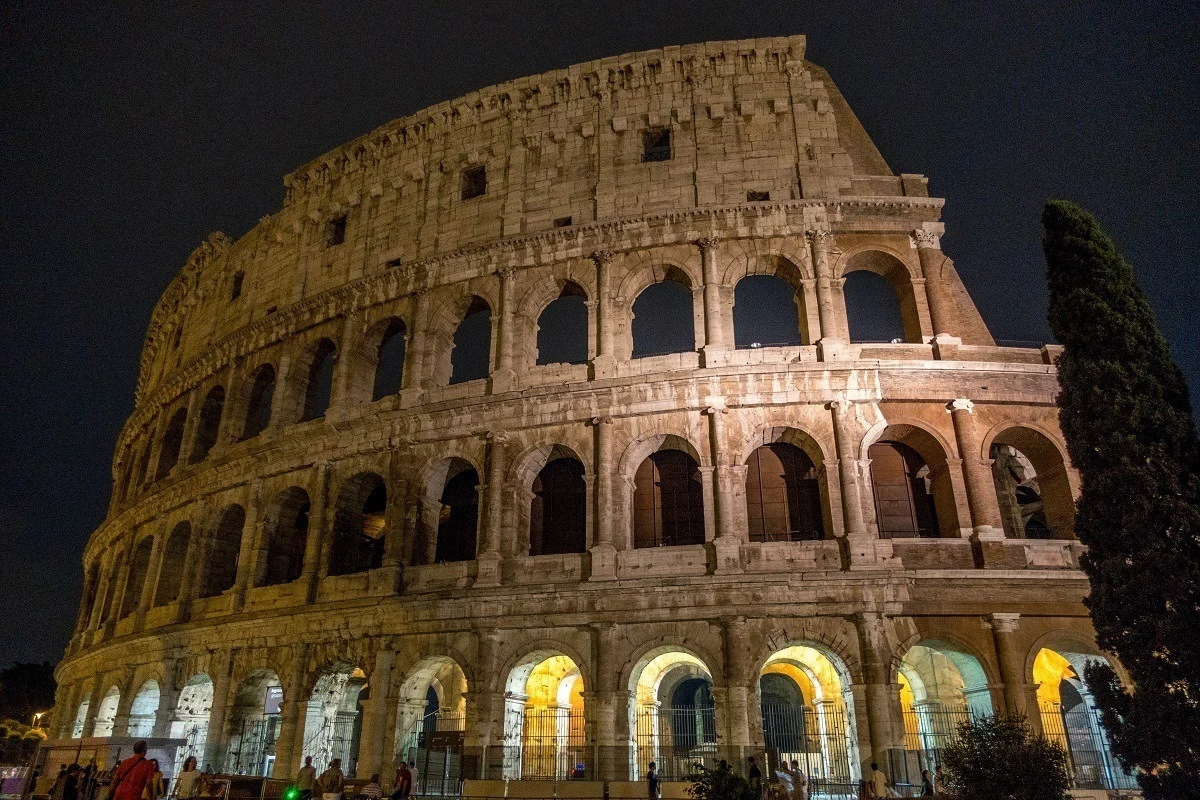
One of the most visited landmarks in Italy, the Colosseum is a must-see if you are ever in Rome. Dating back to 80 AD, the Colosseum allows you to get a peek into Ancient Rome and their gladiator entertainment.
The Colosseum is a family-friendly location as you can see an architecturally impressive historic building and learn something about Roman history in the process. Some of the best places to see inside the Colosseum are The Hypogeum below the main floor and The Bronze Cross at one end, which commemorates the Christian martyrs who died here. Go on a guided tour of the Colosseum and learn about the Roman Empire, or you can do a special night tour.
The Roman Forum
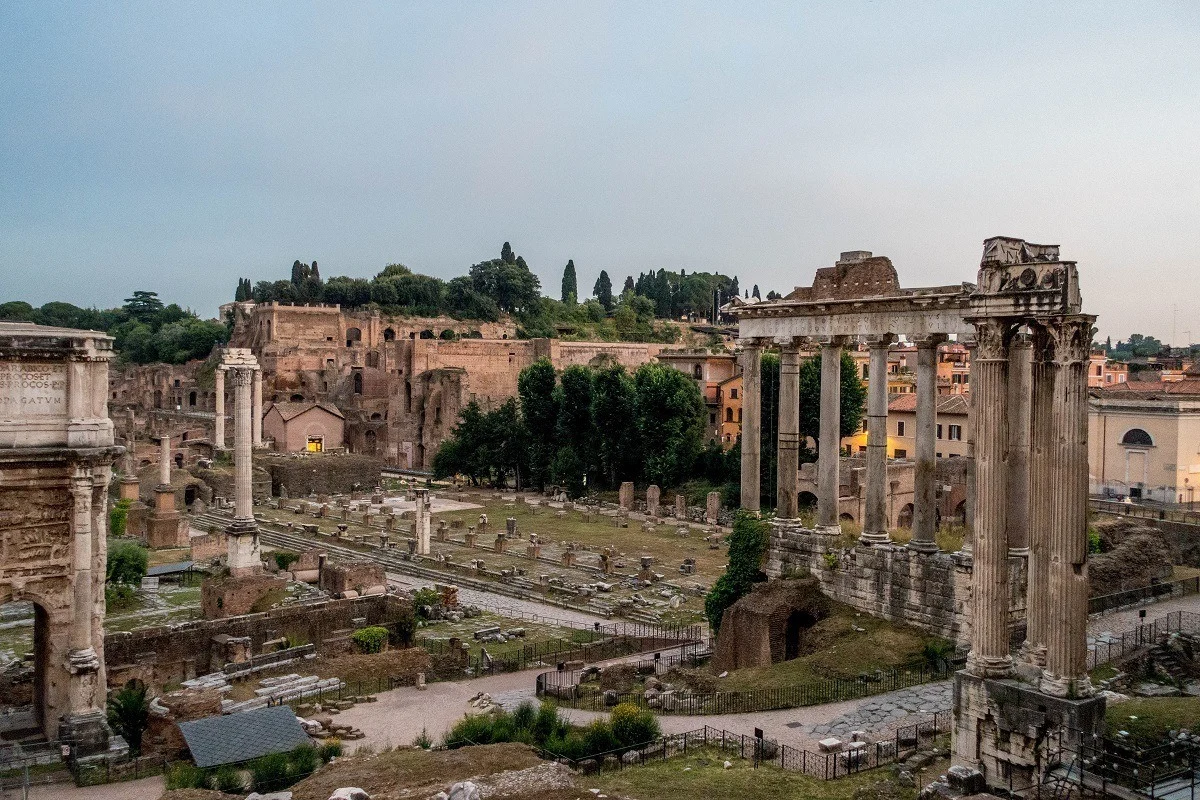
Equally as famous as the Colosseum, the Roman Forum is another landmark you should see while vacationing in Italy. This landmark was a focal point of Roman culture and history. Originally a plaza that housed a marketplace, government buildings were built surrounding the Forum.
Information panels throughout the Forum explain the rise and fall of the Roman Empire. It’s also a popular subject in movies and many films have incorporated the Roman Forum into their plots.
Accessing The Roman Forum is easy as it is within close distance to the Colosseum. Spend time walking around the Forum and learning about how the Roman Empire came into existence.
Piazza Navona
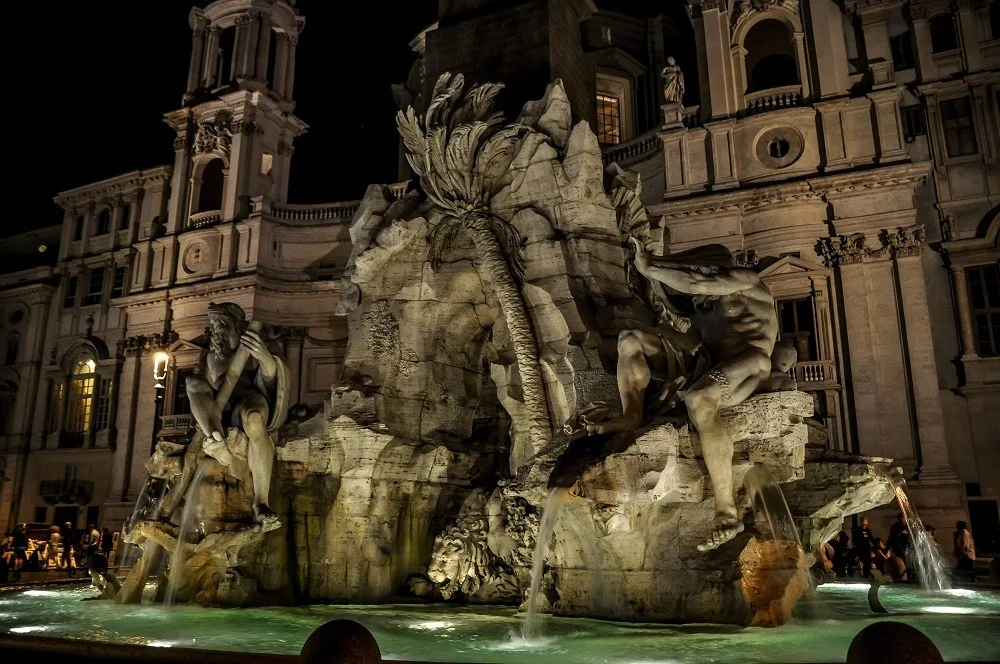
Arguably one of the earliest sporting stadiums in the world, Piazza Navona in Rome has remained a public gathering place. It was built in 86 BC by Emperor Domitian and remained a popular stadium until it was converted to a public square.
These days, this public square is one of the liveliest locations in Italy. If you are looking for a place to get a good feel of everyday living in Rome, you should visit this landmark. Some of the tourist attractions here include beautiful sculptures, gorgeous water fountains, and several street artists. The piazza is also lined with numerous cafes – some good, some not.
The best time to visit this landmark is in the morning as it gives you ample opportunity to take in the beauty of the place before the usual crowds start to gather.
Trevi Fountain
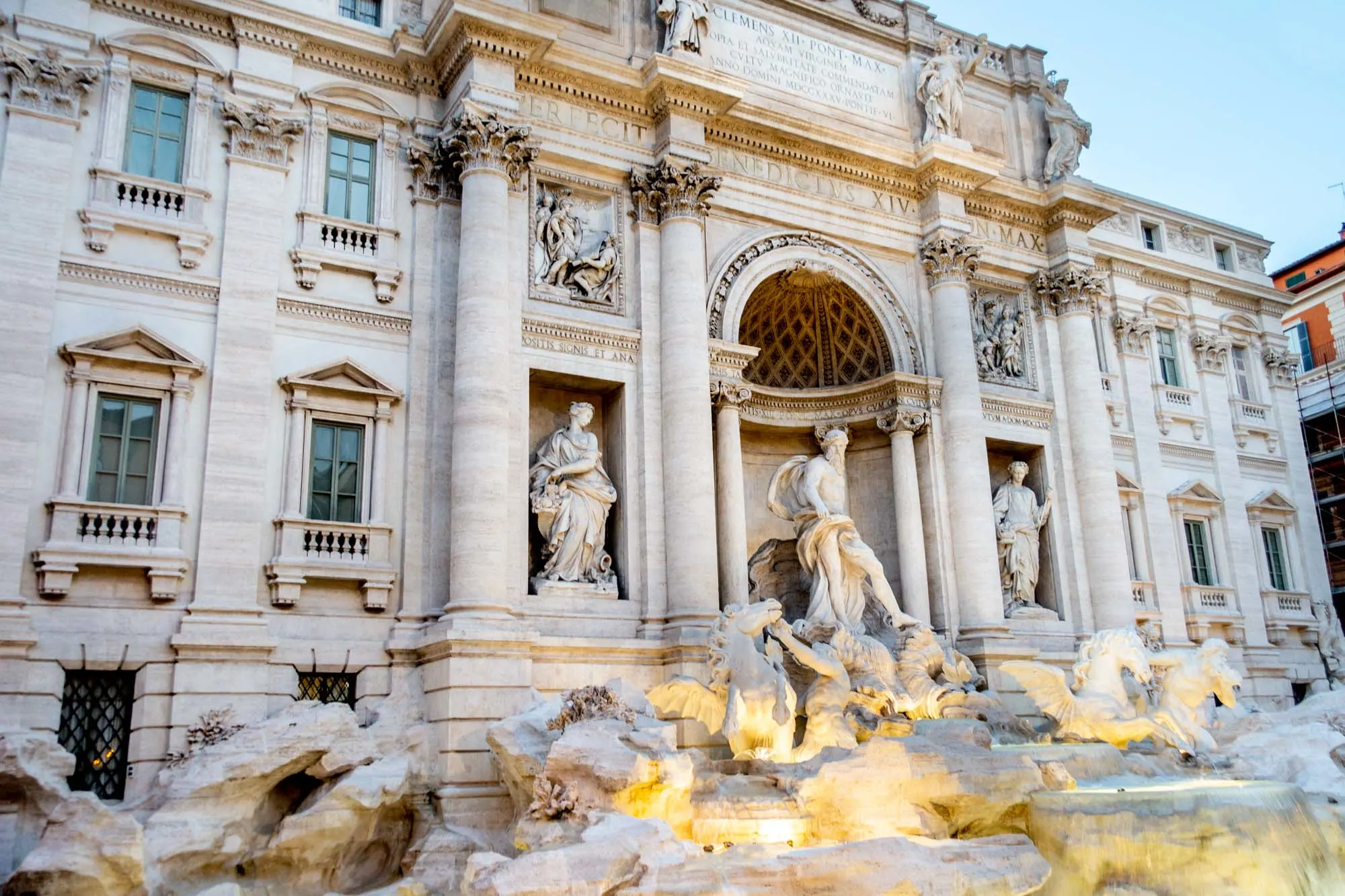
Another Italian landmark you should check out while visiting Rome is the world famous Trevi Fountain. The Trevi Fountain is one of the largest water fountains in Rome. It has been known to draw millions of tourists from all over the world. This is because of its unique beauty. The fountain is carved out of stone and is believed to perfectly represent what Rome stands for: love, beauty, history, art, and mythology.
With regards to mythology, you should try throwing a coin or three into the water. Locals believe that the first coin will bring you back to Rome, the second coin will guarantee that you find love, and the third coin will ensure that you get married. This makes it an excellent place for lovers looking to connect, flirt, and enjoy the good life.
The Pantheon
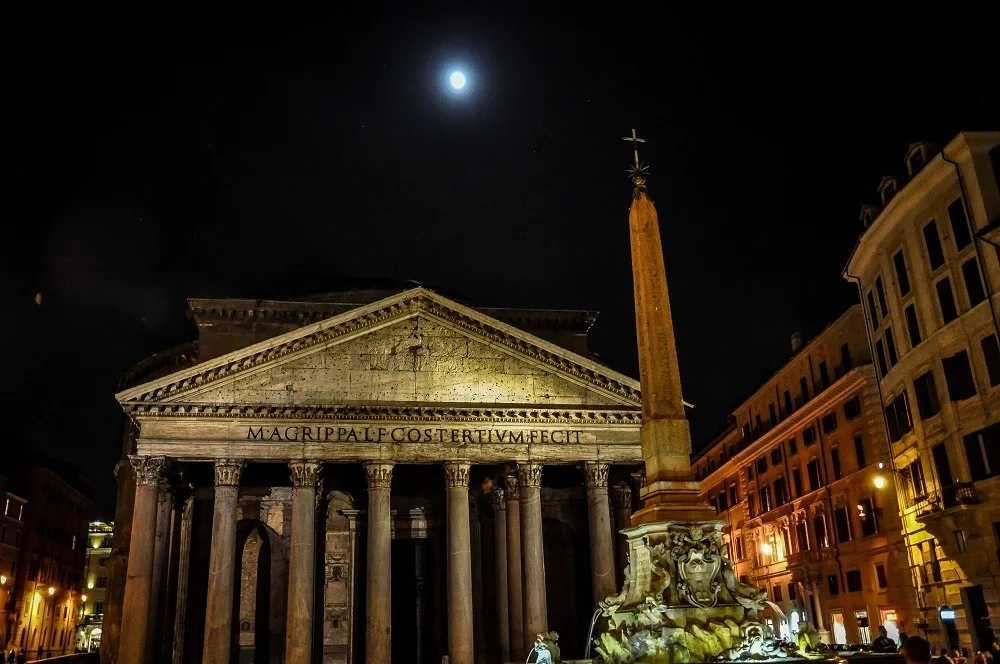
Pantheon is one of Rome’s oldest and most historic landmarks, and happens to be one of our favorite places in Rome. It was initially constructed in 27 BC, then rebuilt in 127 AD after being gutted by a fire. The Pantheon was built as a place of worship for the Roman Gods. It is famous for its unique spherical shape, its dome with an opening (allowing light and rain to come in), and its location in the city. There are tombs inserted into its walls.
If you are looking to explore Roman architecture, a visit to the Pantheon is in order. Not only will you learn more about the architecture of Rome, but you will also learn more about Roman mythology.
St. Peter’s Basilica
One of the world’s most important religious sites, St. Peter’s Basilica, is considered one of the holiest locations for the Catholic Church as it is believed to be built on the grave of St. Peter, who was the first pope of the Catholic Church. It is also one of the largest institutions of the Catholic Church.
Every year, millions of people throng to St. Peter’s Basilica to behold the beauty of the place. There are so many detailed works of art from the greats, such as Michelangelo in the Basilica. Take in the art, climb to the top of the Basilica’s dome and get a great view of St. Peter’s square and Rome as a whole. Or, just find a quiet corner to pray.
Vatican Museums
The Vatican Museums is one of the most historic places in Italy. It holds a lot of Italian history and culture in it (as well as artifacts ‘collected’ by the Catholic Church from other countries). It also contains the most extensive private art collection in the world.
There is so much to see in the Vatican Museums. Admire the paintings and artworks from different time eras. Use the artworks to construct a map that shows the art evolution of Italy. Some other attractions in the Vatican Museums include the Pinecone Courtyard and the Spiral Staircase.
Sistine Chapel
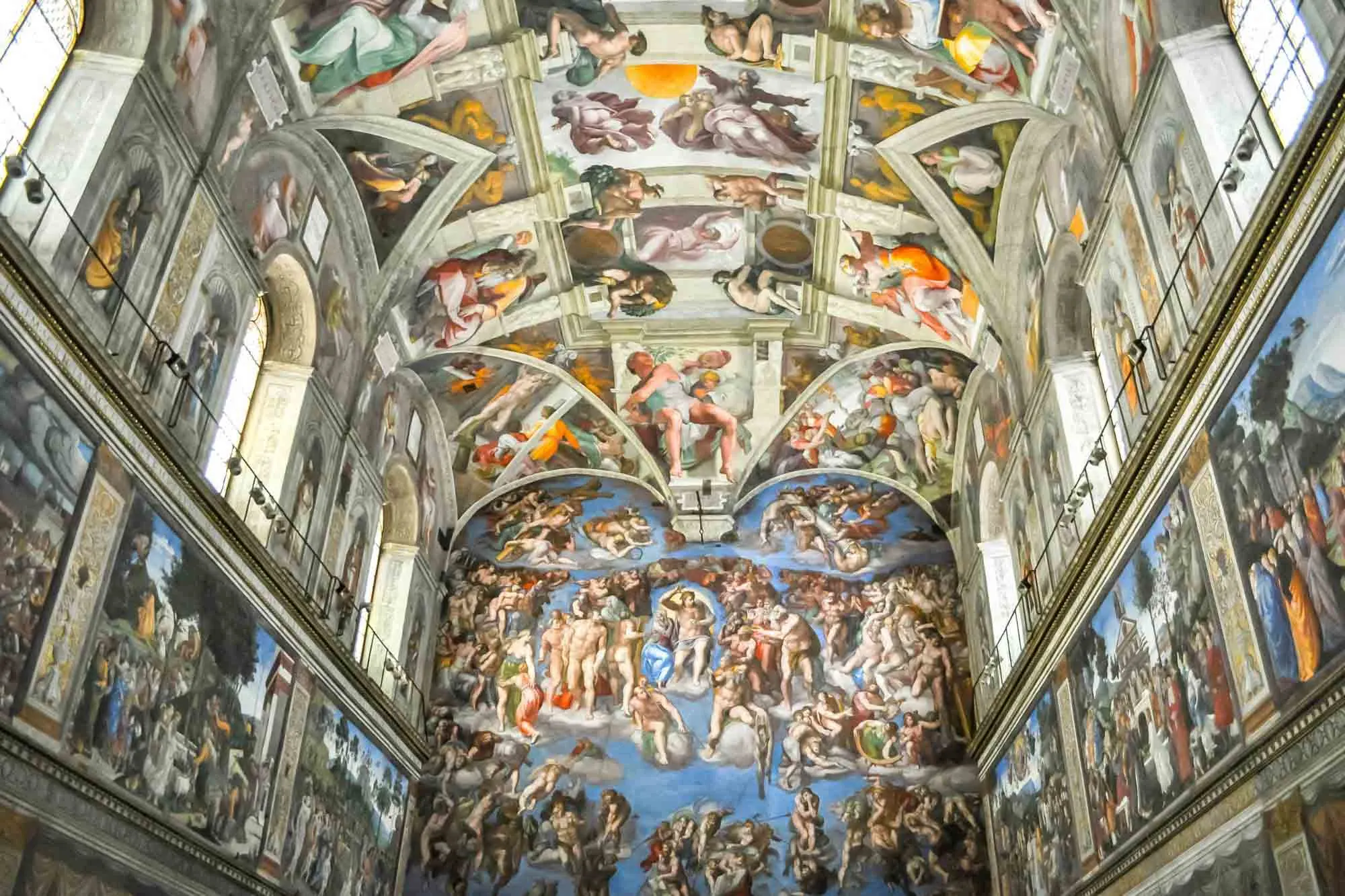
The Sistine Chapel is one of the most famous places in Italy. Located in the Vatican Museums, the Sistine Chapel is notable for being where popes are elected. The chapel is also known for its beautiful artwork, with its walls covered in frescos done by some of the most critically acclaimed artists in world art history. For example, the entire ceiling of the Sistine Chapel is covered in a magnificent fresco by Michelangelo.
After you tour the rest of the Vatican Museums, step into the Sistine Chapel and enjoy art at its finest. Pictures are strictly forbidden because the Catholic Church sold the exclusive rights to photograph the ceiling to the Nippon TV network of Japan.
Villa Borghese
That is one of the most popular gardens in Italy. Popularly known as the green lung, it is the third-largest public park in Rome.
There are many places to visit and many things to see in this public park containing spectacular buildings, museums and other attractions. Some of them include a replica of Shakespeare’s Globe Theatre, a Zoological Museum, the Galleria Borghese, the park’s leading museum, and the Casino Borghese, which contains many of Bernini’s highly prized paintings from his Borghese collections. It also features the Etruscan Museum, the French Academy in Rome, and the Fortezzuola, a gothic garden structure containing breathtaking sculptures.
Or, just spend some time walking along the green hills.
The Appian Way/Via Appia
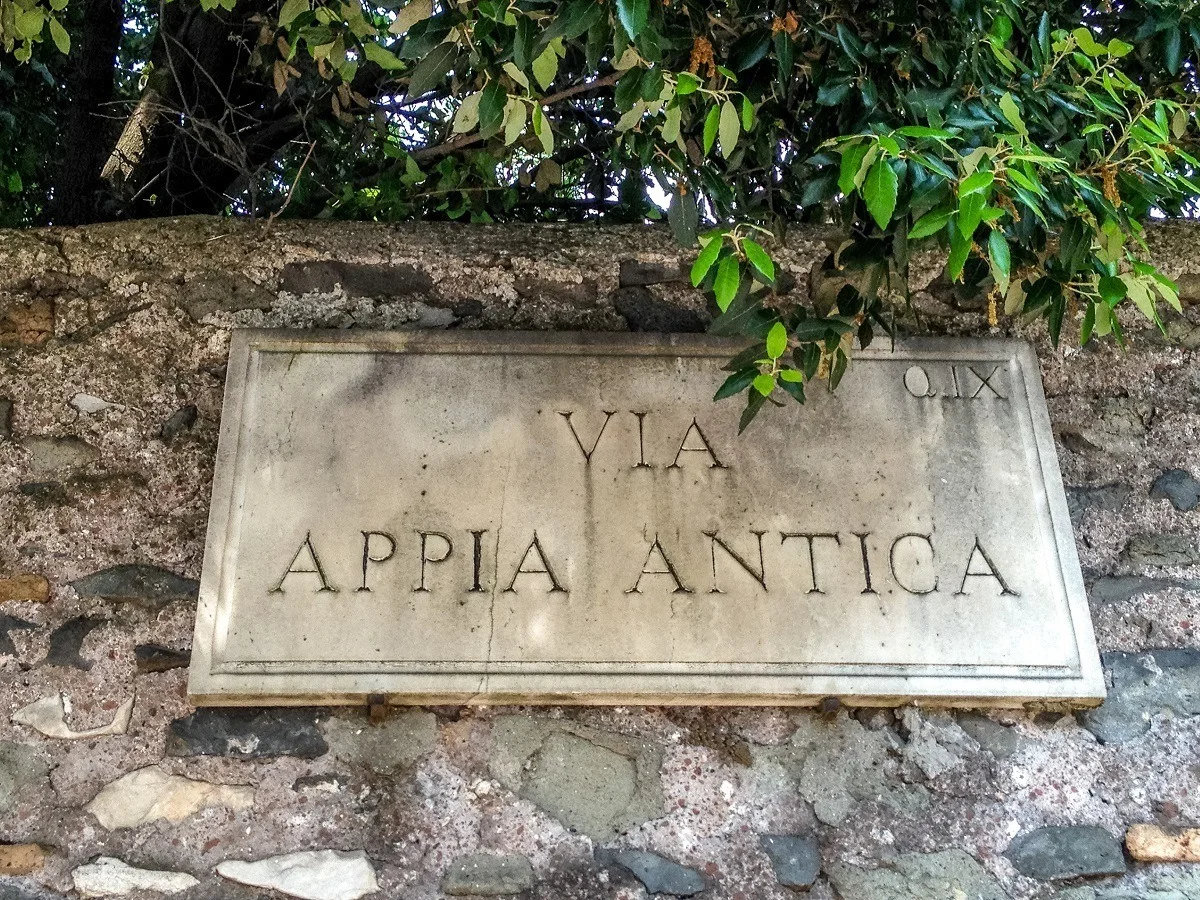
Looking to see one of the earliest inspirations for the roads we have now? Go no further than the Appian Way. It is one of the earliest and most strategic roads built by the Roman Empire. It was initially constructed to aid the transportation of military supplies and troops.
Past the era of wars and Roman conquest, many historical events have happened along the Appian Way, including the men’s marathon during the 1960 summer Olympics.
Visit the Appian Way, walk down the road followed by the ancient Roman conquerors and find out more about the history and civilization of Italy if you are on a guided tour.
As they say, all roads lead to Rome.
Piazza di Spagna/Spanish Steps
The Piazza di Spagna is one of the most visited Italian landmarks. It is a public square that properly represents the unique Baroque architecture of Rome. If you are an architecture buff or simply enjoy exploring magnificent structures, you should visit Piazza di Spagna in Rome.
Some of the attractions this landmark has to offer include the Salina Spagna or the Spanish Steps, a staircase built by Pope Benedict XIII that has become a place for people to relax and get a good view of the square. It also boasts the Fontana Della Barcaccia, a boat-shaped fountain, and the beautiful Trinità dei Monti church.
In the streets surrounding the Spanish Steps, you’ll find boutique stores, excellent restaurants and wine bars.
Castel Sant’Angelo
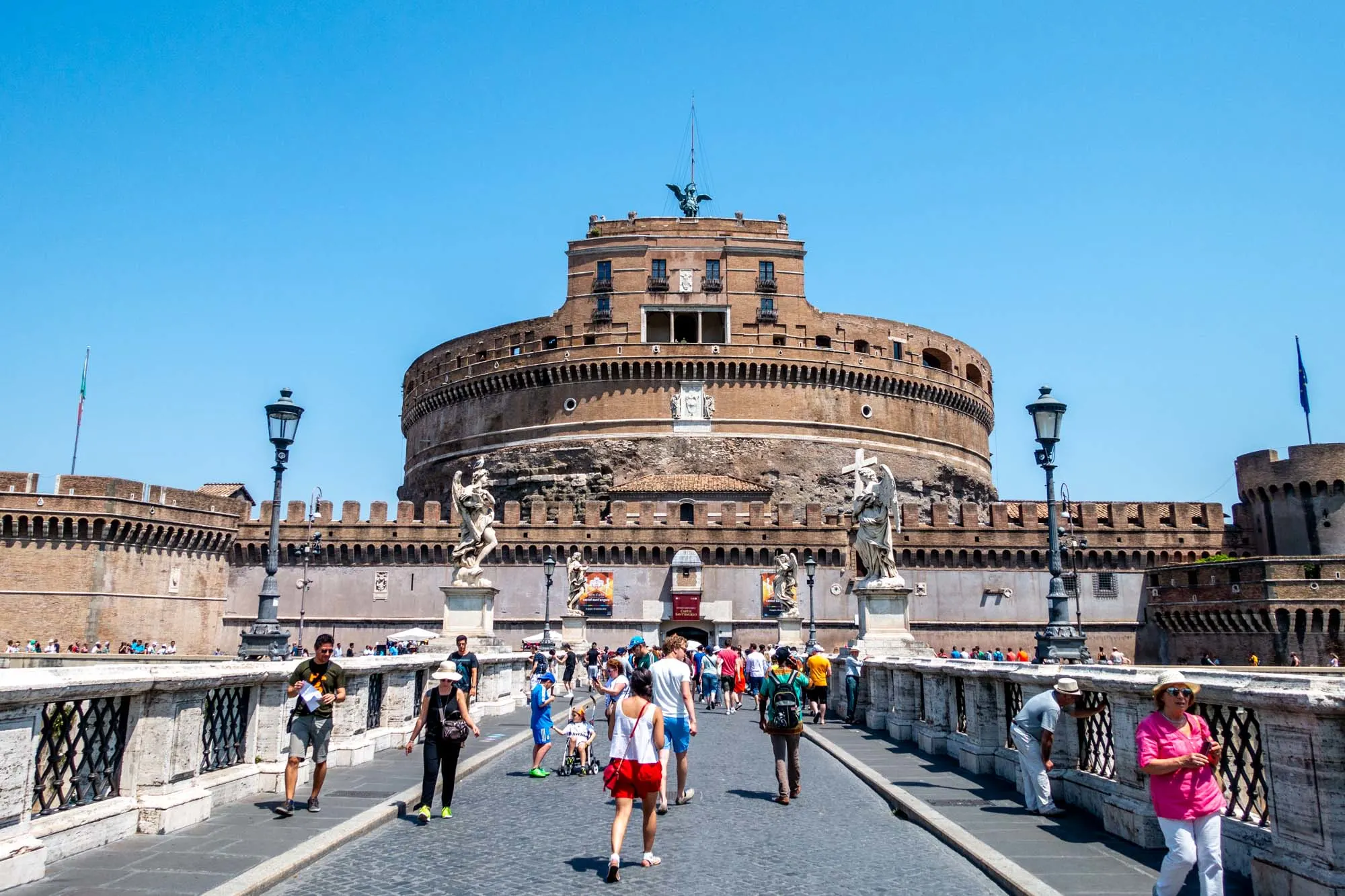
Castel Sant’Angelo, just like many other historical landmarks in Italy, introduces you to what life was like in Ancient Rome. Initially constructed as a family Mausoleum by Emperor Hadrian in 139 AD, Castel Sant’Angelo is now one of Rome’s lesser-known landmarks (although still one of it’s most beautiful!).
It was named Castel Sant’Angelo in 590 AD by Pope Gregory, who reportedly dreamed of Angel Michael ending a pandemic in the city from the top of the castle.
Explore the five floors of the castle. Check out the castle’s excellent museum, Museo Nazionale di Castel Sant’Angelo. Stand at the top of it and get a breathtaking view of Rome.
Hadrian’s Villa
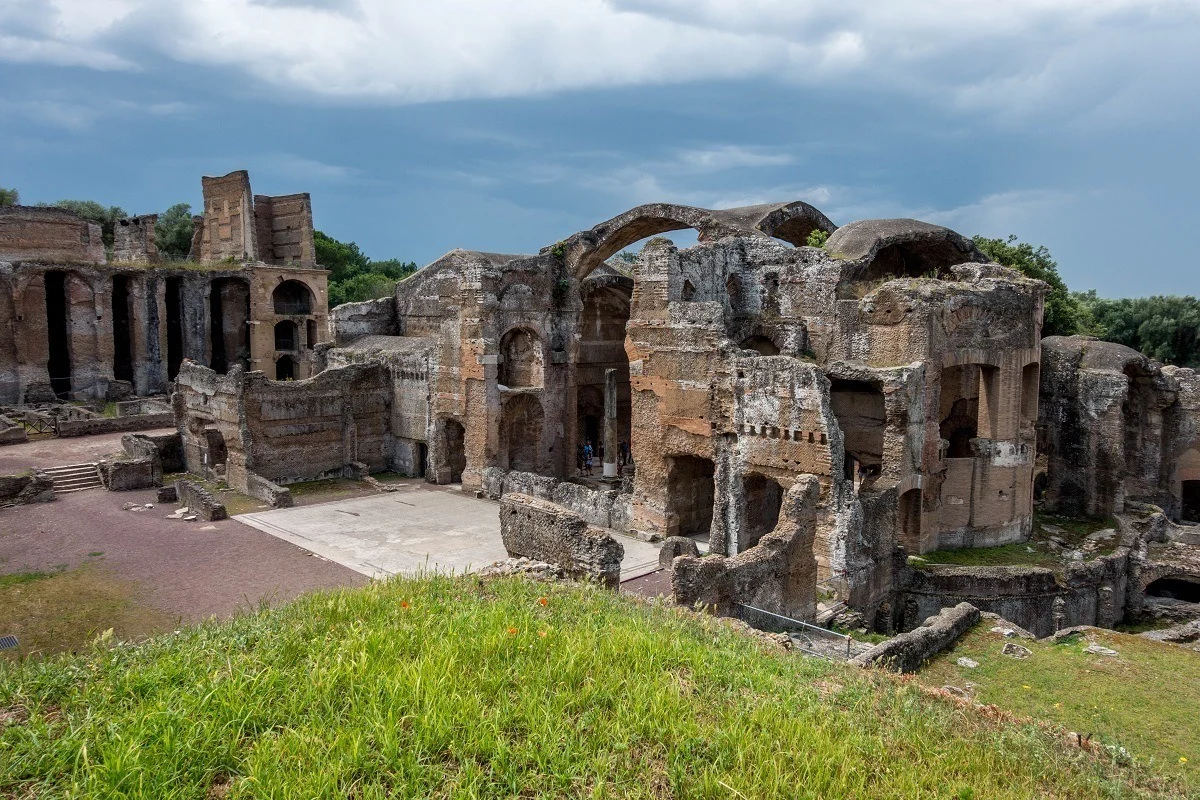
A UNESCO World Heritage site since 1999, Hadrian’s Villa in Tivoli is one of the best-maintained landmarks in Italy. It was built between 118 AD and 138 AD by the Roman Emperor Hadrian, who intended it to be his getaway from the hustle and bustle of Rome. It is an ancient vacation home, except that instead of being a simple home, it was built like an old Roman City complete with everything the emperor would need to function away from the Roman capital.
Some of the things to see at Hadrian’s Villa include the different buildings that make up the Villa, such as the baths, the administrative buildings, the theaters, the barracks, the temples, the gardens, and the fountains.
Villa d’Este in Tivoli
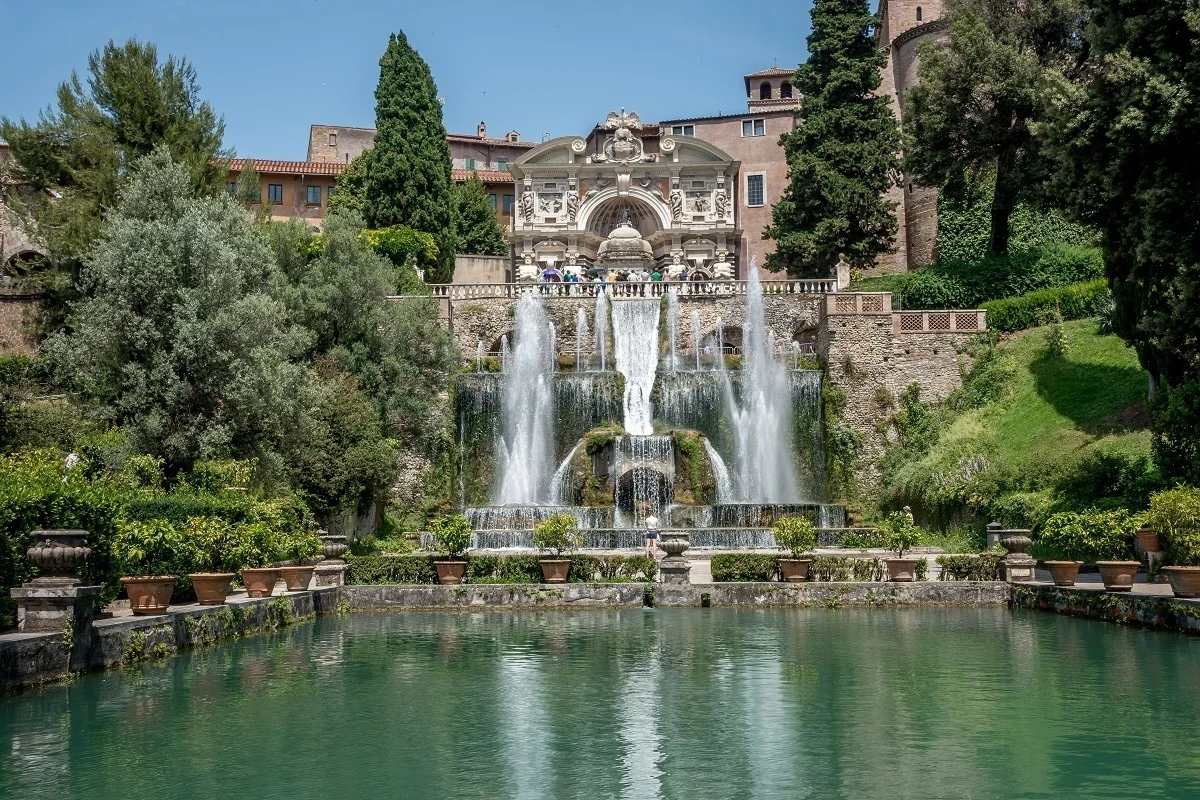
Villa d’Este stands as a true testament to the architectural prowess of the Italian Renaissance, making it an essential Italian landmark. It is a complex made up of the Palazzo d’Este, a residential palace, a beautiful, well-planned garden consisting of plant-lined avenues, and over a hundred fountains, architectural and landscaping wonders.
Step into the Palazzo d’Este and walk through its many chambers built for different purposes. There are numerous beautiful artworks and frescoes inside the palace. The outside of the palace is also a beautiful work of art. Walk by the different fountains, such as the Rometta, which has a sculpture of Rome as an enthroned deity, and the Fountain of Neptune, one of the most photographed places in the area.
Saturnia Hot Springs
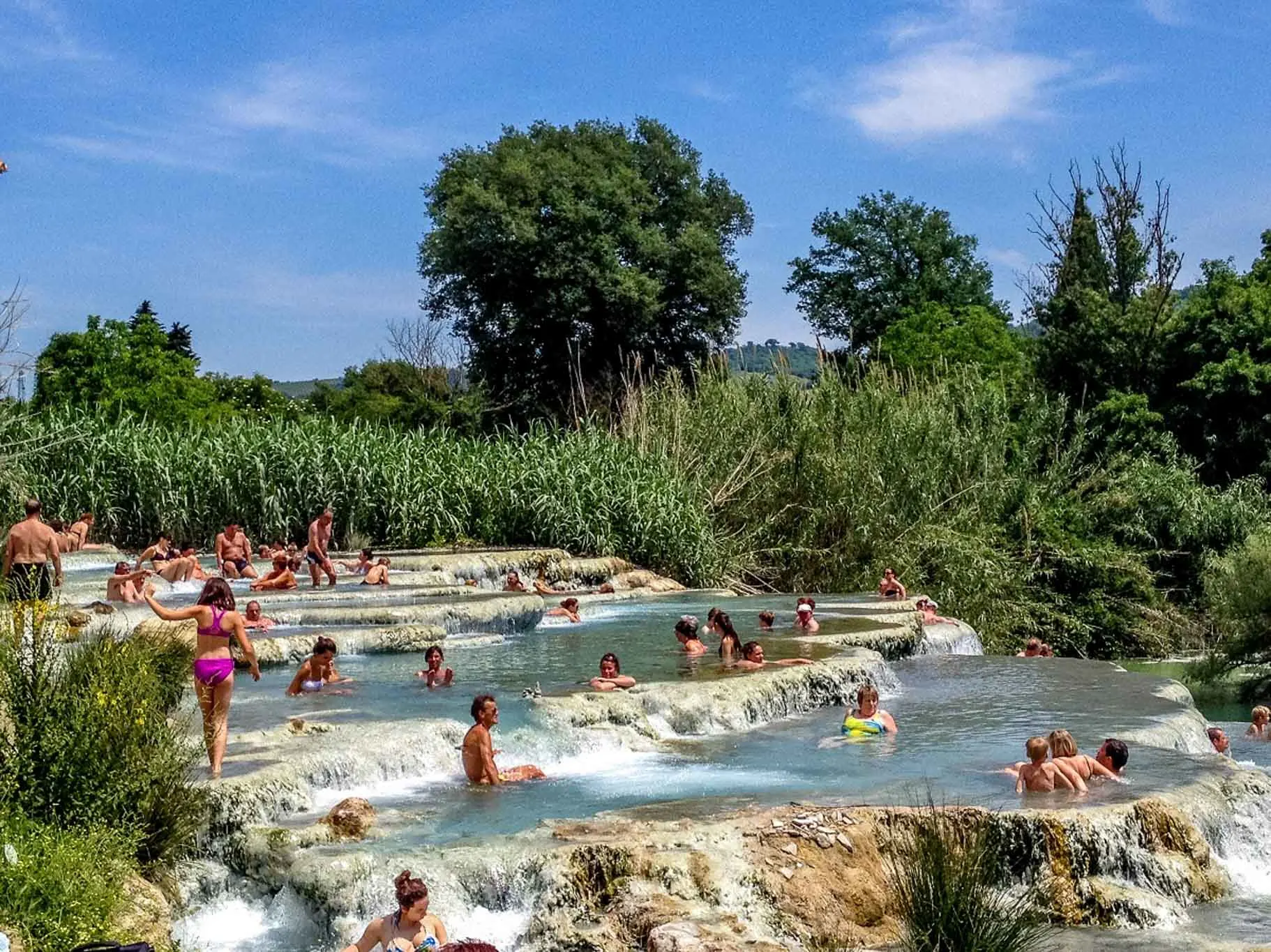
Saturnia Hot Springs is one of the stunning natural wonders of Italy. This landmark that has been extensively covered in various travel blogs (including ours!) often attracts lovers of nature and adventure. So, if you are feeling a little adventurous, visit Saturnia Hot Springs.
The water flows over rocks to create warm, inviting pools of water. The location is so serene that it allows you to lay back and take in the beauty of nature. Wade into the water and find your private pool or enter a larger pool with your family and relax in the water.
Piazza del Campo in Siena
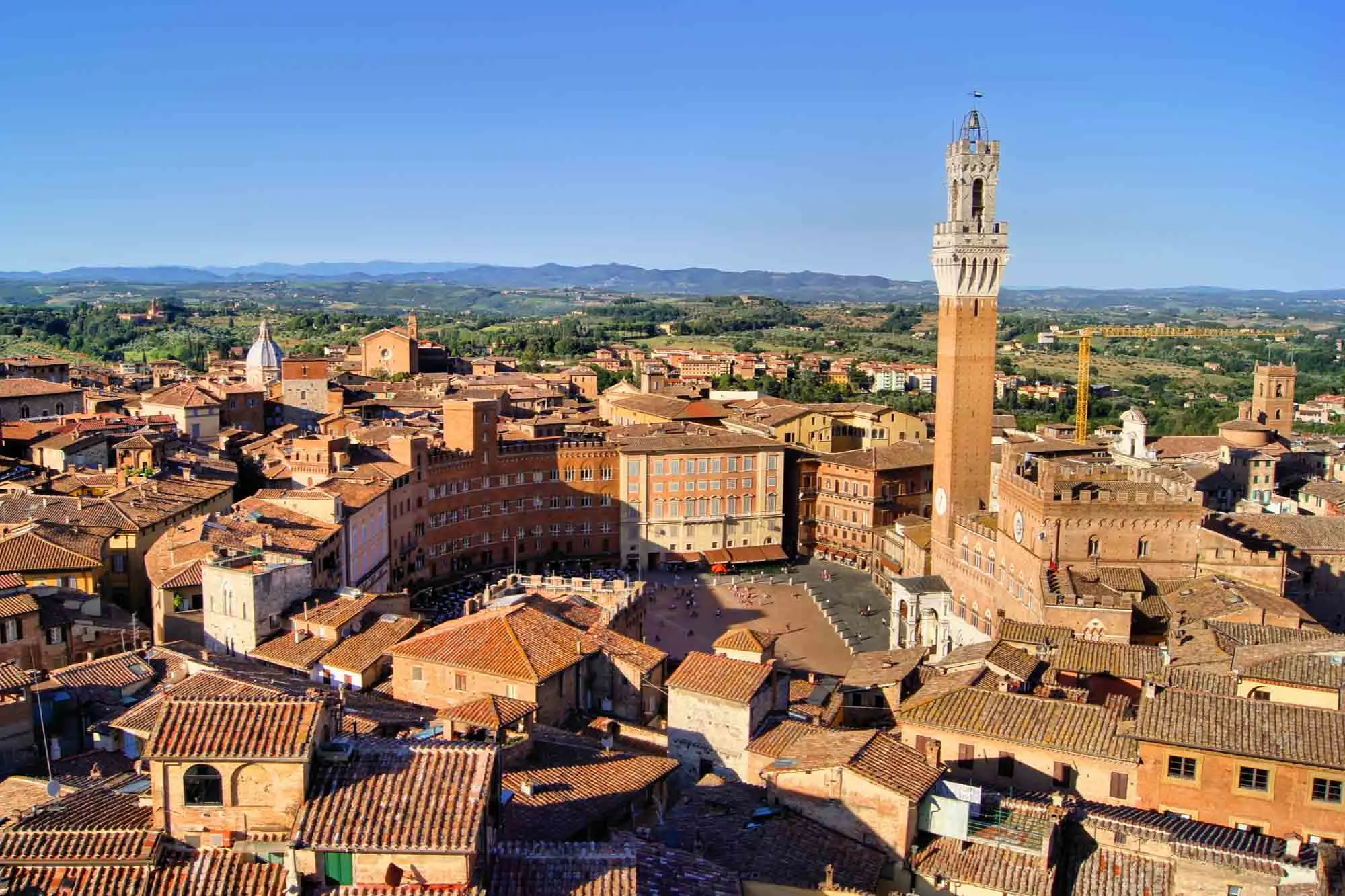
The Piazza del Campo is one of the most popular city squares in Italy. This makes it one of the significant landmarks in Italy. It is the center of the town of Siena and an excellent place for tourists and locals to converge.
Some of the prominent tourist attractions here include the Torre del Mangia, a magnificent 102-meter-high tower, the Museo Civico town museum, the Palazzo Pubblico, the town hall, and the picturesque Fonte Gaia fountain. Step into one of the numerous cafes and restaurants in the Piazza del Campo and try out the local cuisine. Better yet, come on Wednesday – Siena’s market day – and immerse yourself in local, artisanal products.
San Gimignano
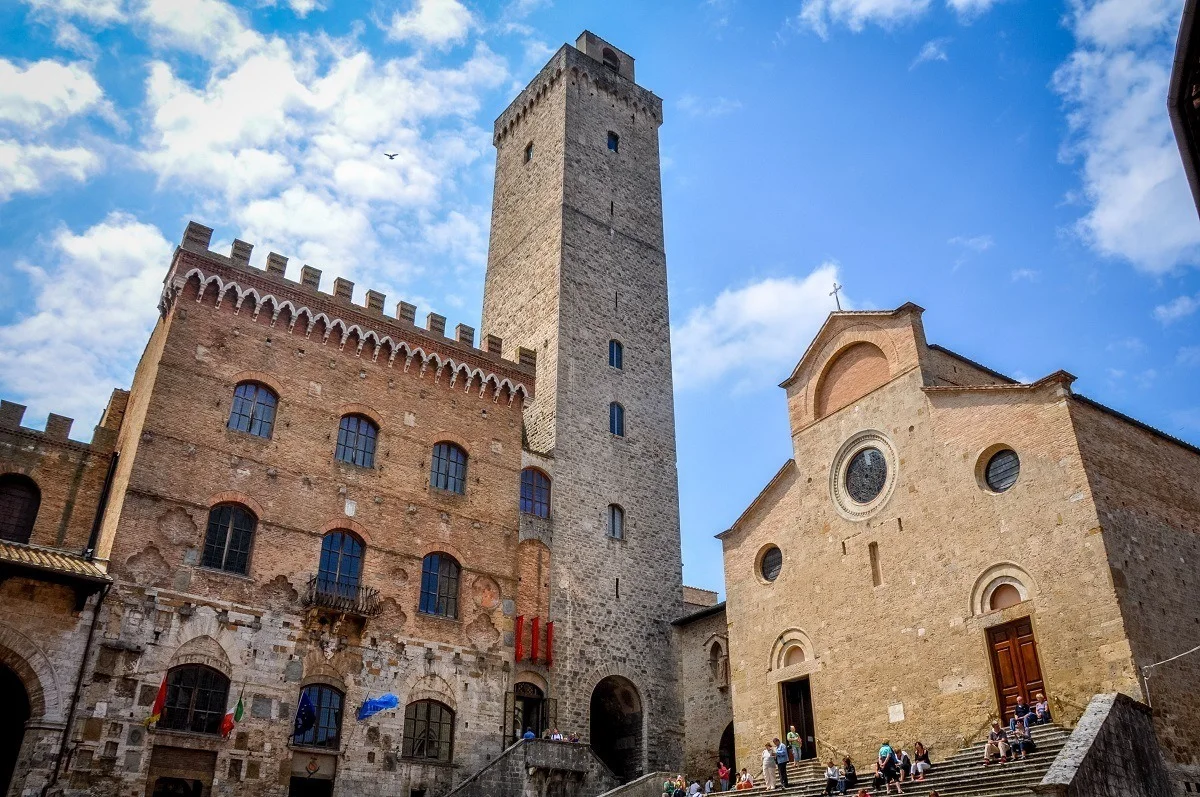
San Gimignano is famous for its unique medieval architecture featuring several high-rising towers. During the glory era of San Gimignano, there were about 72 tower houses built as symbols of power and wealth by the ruling families of the town. Only 14 of these tower houses are surviving. However, the city has maintained its majestic appearance.
Some of the activities you can carry out here include a tour of the surviving 14 towers and other medieval buildings, including religious buildings. The city is also popular for its white wine, Vernaccia di San Gimignano. So, a wine tasting is in order.
Stromboli Volcano
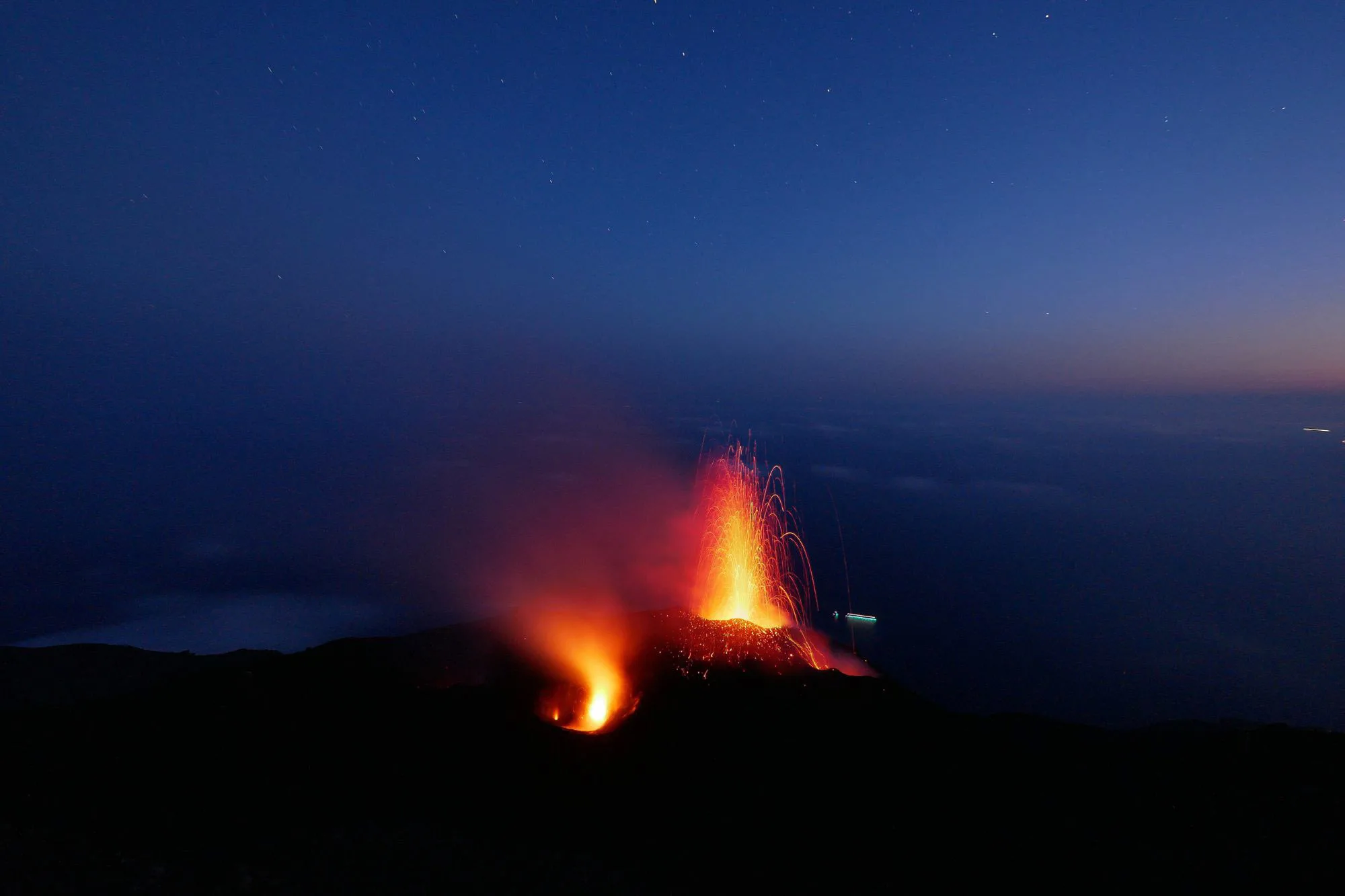
The Stromboli Volcano is one of the three active volcanoes in Italy and one of the most active volcanoes in the world for the last 2,000 years.
Apart from witnessing an active volcanic eruption, there are several things you can do in the area. You can climb the volcanic rocks in the area or visit the sandy beaches. You can also swim in the warm waters of the Tyrrhenian Sea while watching volcanic eruptions. Other options include, kayaking or go on one of the popular night hikes close to the volcano’s craters.
Vulcano Hot Springs
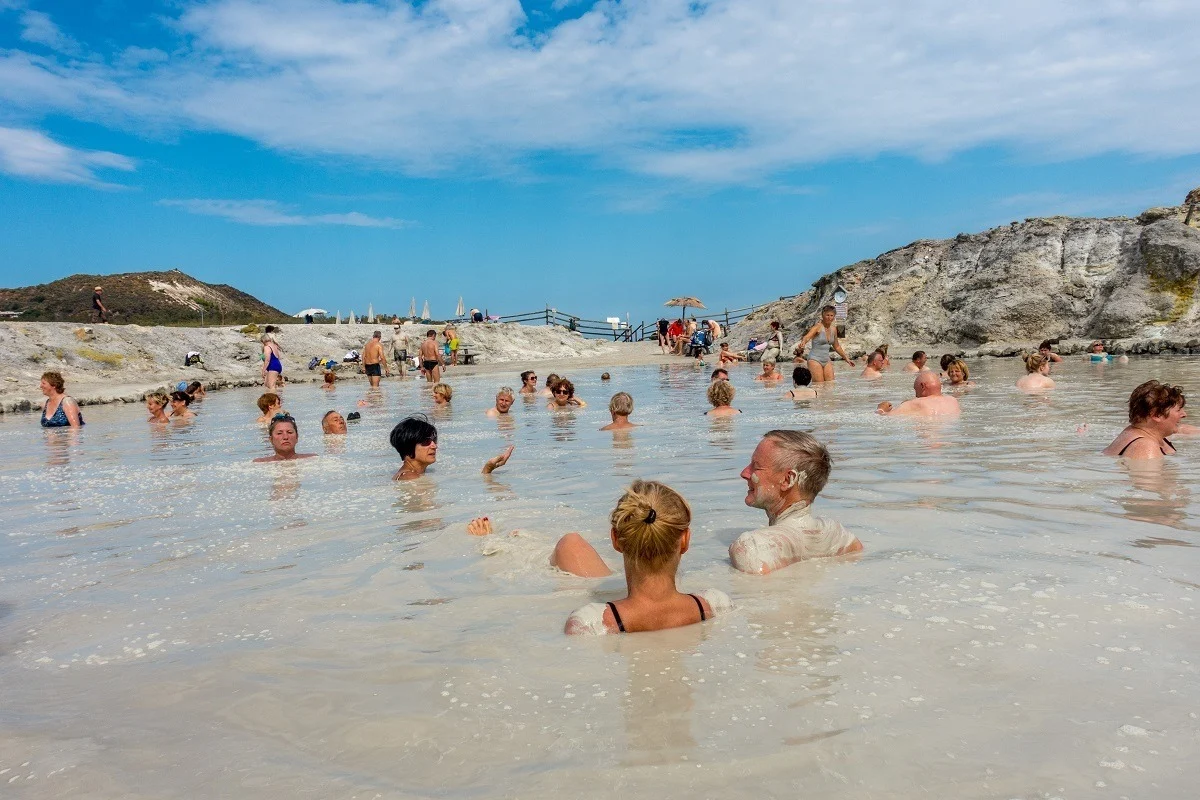
The Vulcano Island on is the the source of the term Volcano used in describing other volcanoes. According to Roman mythology, Vulcan, the God of Fire, had his forge. Vulcano Island is also the place where, thanks to geological activities, there is tremendous volcanic activity.
But most travelers come here for the famous Vulcano Hot Springs. Other activities on the island include hiking the volcanic crater, relaxing on the black sand beaches, and soaking in the thermal mud baths.
Pompeii
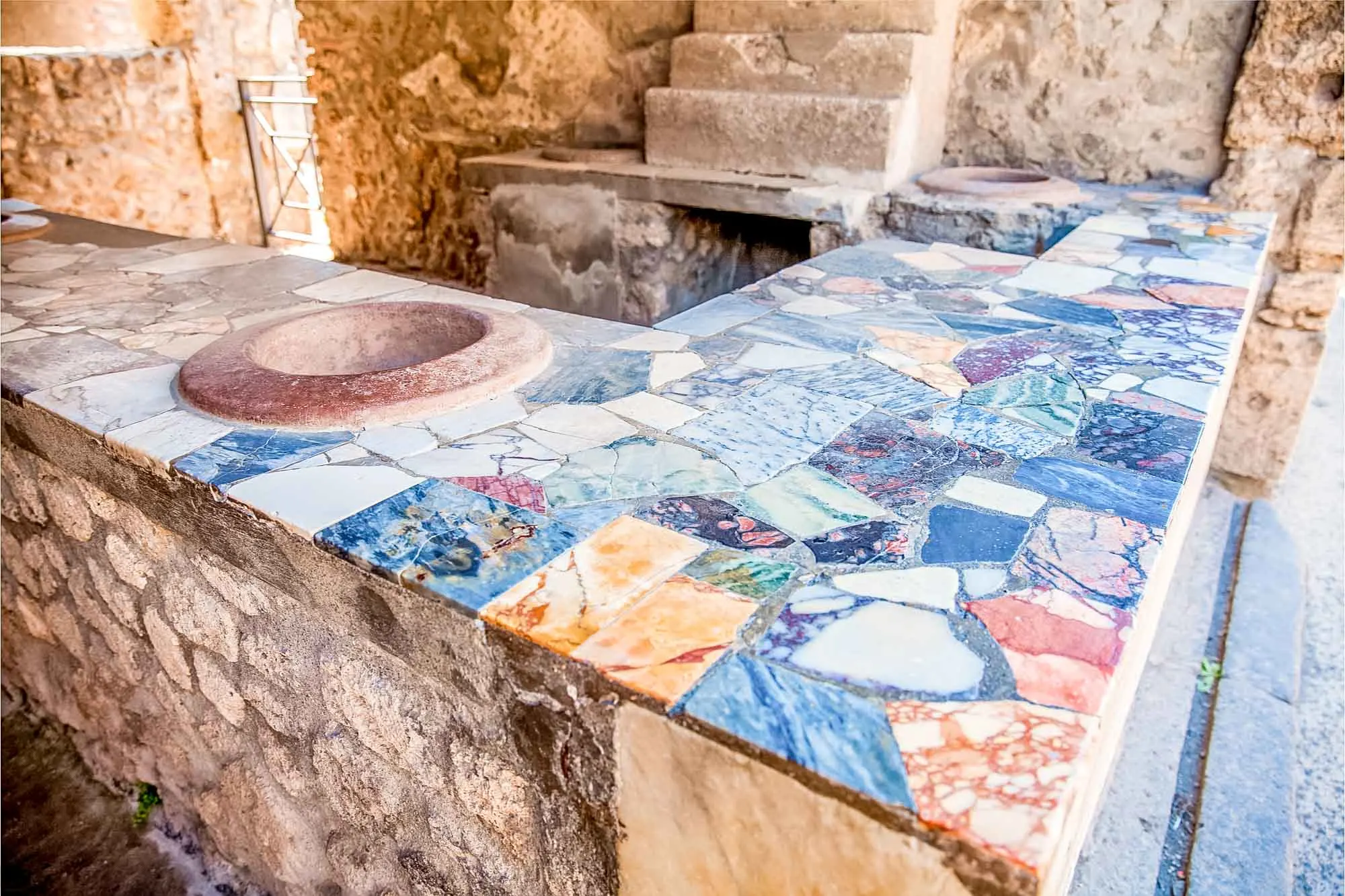
Pompeii is one of the most well-preserved towns in the world. It is a 2000-year-old archaeological site that is still being excavated to reveal well-preserved parts of the Ancient Roman civilization that was buried under ash and pumice when Mount Vesuvius erupted in 79 AD.
Go on a guided tour of Pompeii! You’ll see some of the excavation sites, including the Temple of the Isis, which was a popular worship place in the glory days of the Roman Empire, well-preserved homes of upper and middle-class Roman citizens, as well as ancient Roman baths.
Leaning Tower of Pisa
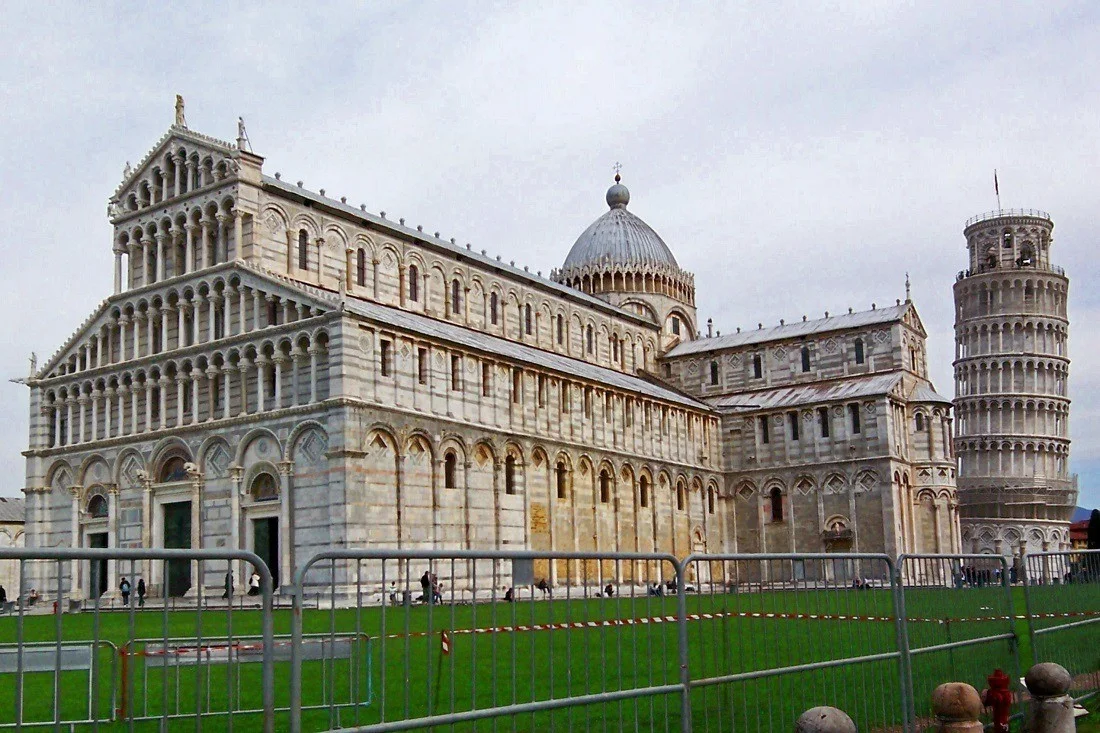
The Leaning Tower of Pisa was initially constructed as the bell tower for the small town of Pisa. However, the architects got the calculations wrong and constructed the tower on uneven ground. This caused the tower to lean.
Not only is it popular for the leaning and the engineering mistake, but it is also popular because Galileo used it for many of his gravity-related experiments. So, if you are looking to take your kids on a fun, educational trip that combines science, art and architecture, take them on a visit to the leaning bell tower in Pisa’s Square of Miracles.
Piazza Maggiore in Bologna
Located in the heart of Bologna, the Piazza Maggiore is the city’s main public square. It was historically the place where people gathered for public meetings. It was also the commercial center of the city because the market was held there. The Quadrilatero Market is located just off Maggiore. And the main square is built so that the rest of the city revolves around it.
Piazza Maggiore still stands out today as it is still the preferred place of meeting for locals. The shops and restaurants in the area provide authentic Italian refreshments, so be sure to stop by a few shops when visiting Piazza Maggiore.
Basilica di San Petronio
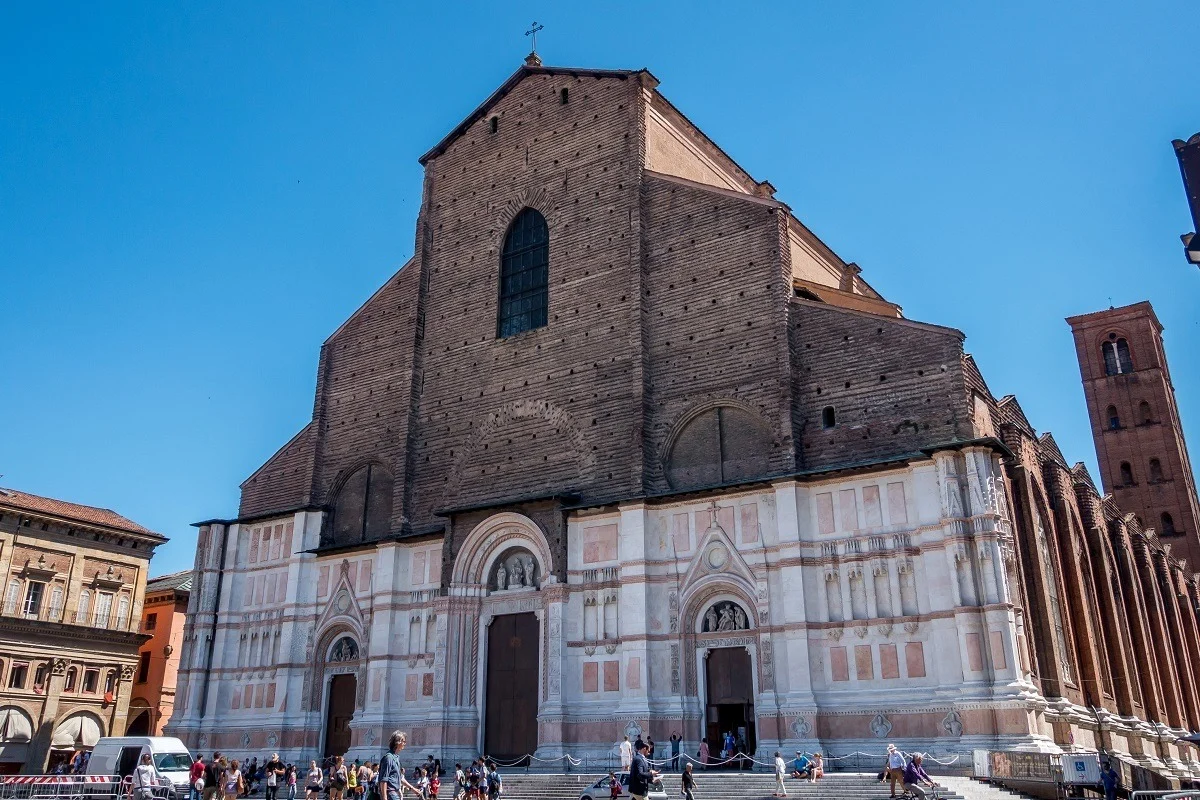
The Basilica di San Petronio is one of the largest churches in the world and one of the highlights in Bologna. Its exterior is a colorful affair with red and white marble on the lower part of its façade and brown bricks at its top. The Cathedral was constructed over 100 years, and construction only stopped when the Catholic Church realized that it would be bigger than St. Paul’s Basilica in Rome.
The interior of the Basilica is as beautiful as its exterior. It is made up of 22 chapels and three naves. There are several works of renaissance art inside the Basilica.
Apart from the stunning works of art, some of the things you can see at the Basilica include the longest meridian line in the world, which is etched into the floor of the Basilica, and the bell tower and terrace from which you can get a great view of Bologna.
Saint Mark’s Basilica
Saint Mark’s Basilica is one of the most famous structures in Italy. It is quite picturesque and has appeared in numerous magazines and postcards and internet pictures.
It was not initially a cathedral when it was constructed in the 11th Century, when it was constructed as proof of the progress and wealth of the Venetian city state. In 1807, it was converted to a cathedral by the Roman Catholic Church and named after Saint Mark.
Visit this Cathedral and take in its beauty and unique Byzantine architecture.
The Canals in Venice
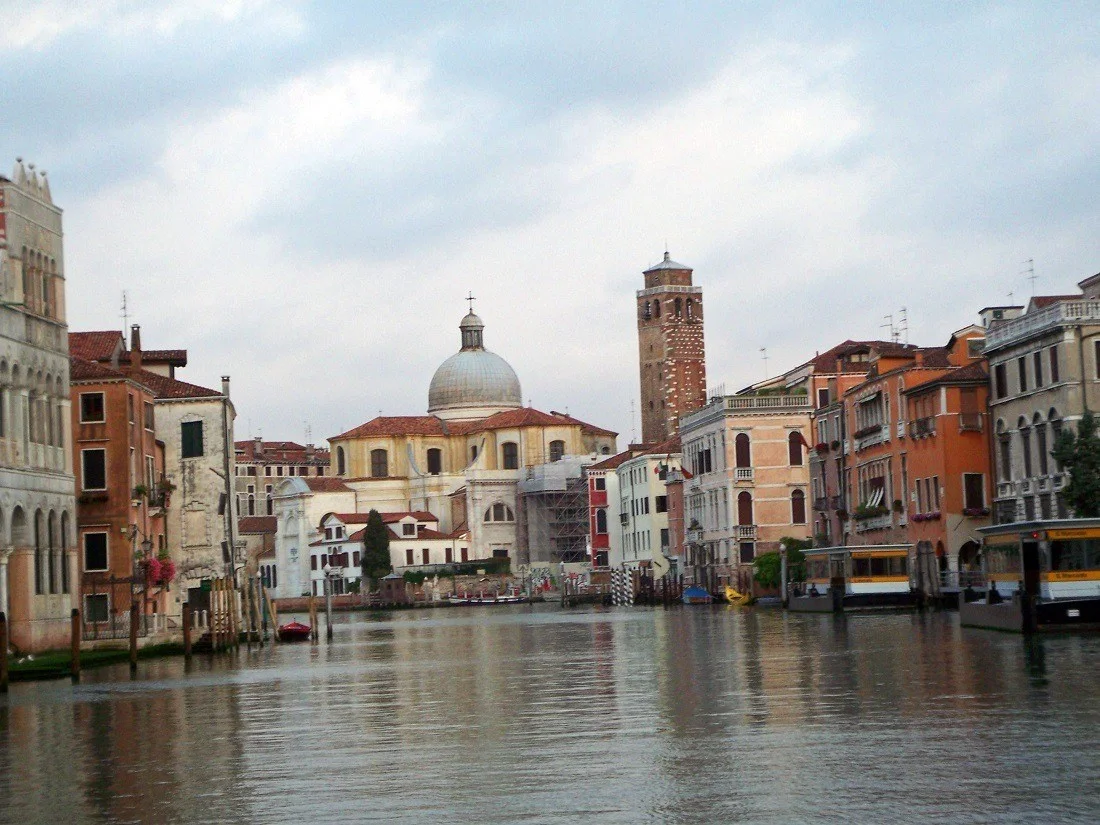
The canals in Venice are one of the most prominent landmarks in Venice. Most postcards and pictures of Venice feature the canals. Every year, many people flock to Venice to see the canals and the beautiful houses built along the waterways of Venice. Venice is basically a city built on water.
Get on one of many gondolas or water taxis in Venice and explore the city. Get a grand view of the exterior of Saint Mark’s Basilica.
Rialto Bridge
The Rialto Bridge is one of the most important landmarks in Venice and it has become one of the most recognizable features of the city. It is the oldest bridge in Venice to cross the Grand Canal, having been built in 1173. Up until the mid 19th Century, it was the only means of crossing Vernice’s Grand Canal by foot.
Now a popular tourist attraction, it features many stores from which tourists can purchase postcards, keepsakes, and cute jewelry. Take a walk on the bridge. Go window shopping or purchase a souvenir from the local vendors.
Piazza San Marco
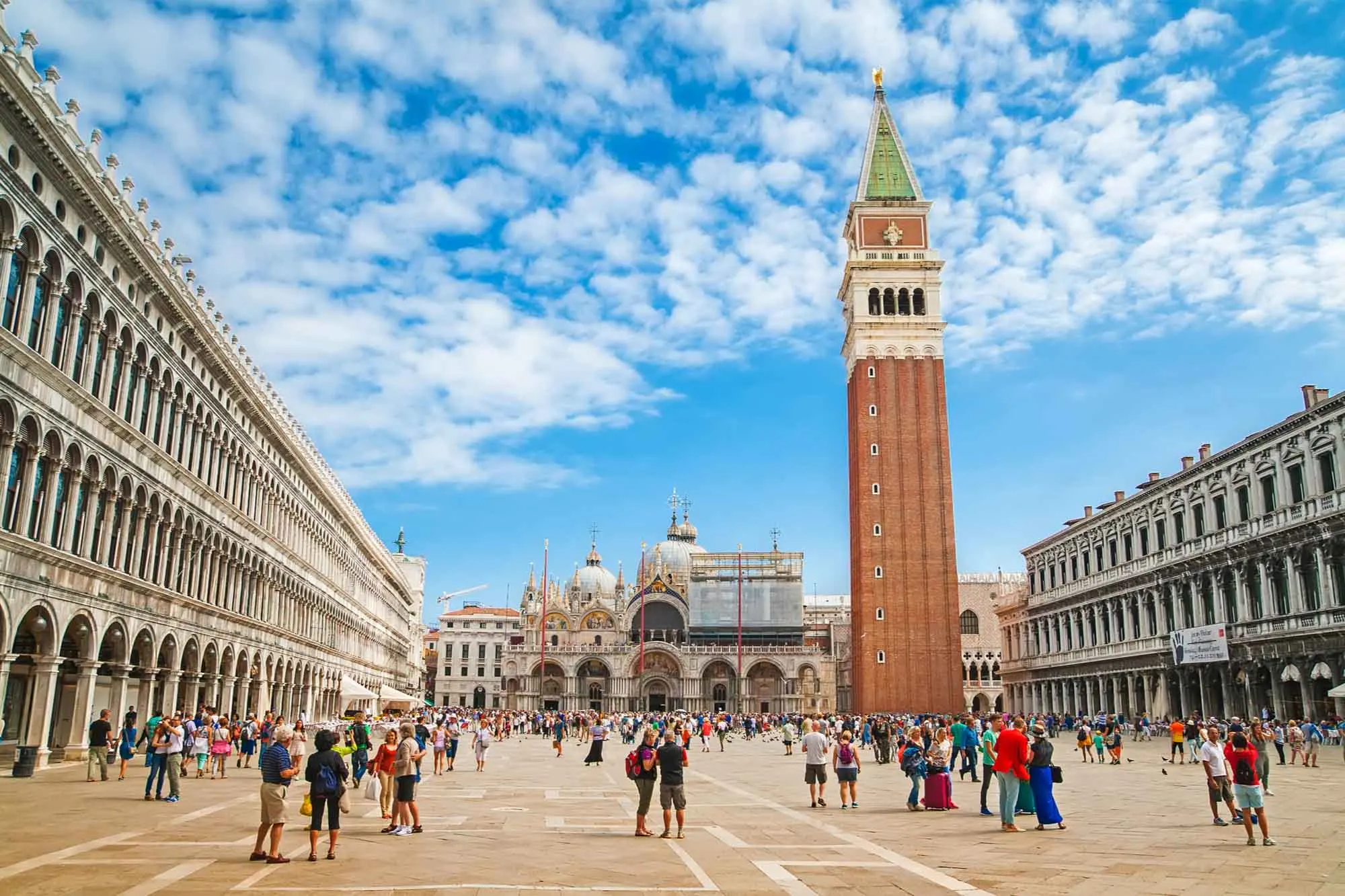
Piazza San Marco is considered the social center of Venice. The public square is a melting pot of Venetian culture and is a perfect place for you to rest while visiting the attractions within the area such as the St. Mark’s Basilica.
Some of Venice’s most popular cafes are also in Piazza San Marco. Grab a drink here, feed the pigeons (if you dare), watch entertaining open-air musical performances, and experience Venetian cuisine.
Caserta Royal Palace
Caserta Royal Palace and Park occupy an important place in Italian and European history as one of the last great European gardens. The palace in Caserta (located just north of Naples) is made up of beautiful gardens, woodlands, fountains and a silk factory.
Explore the gardens of Caserta Royal Palace and Park. One of the gardens to look out for is the English Garden which has a lake and mimics ancient European ruins. Discover the network of water fountains that begin at the palace and go all the way to a waterfall in the forest. If you have kids, they can can play in the playhouse that is shaped like a castle.
The Ruins of Paestum
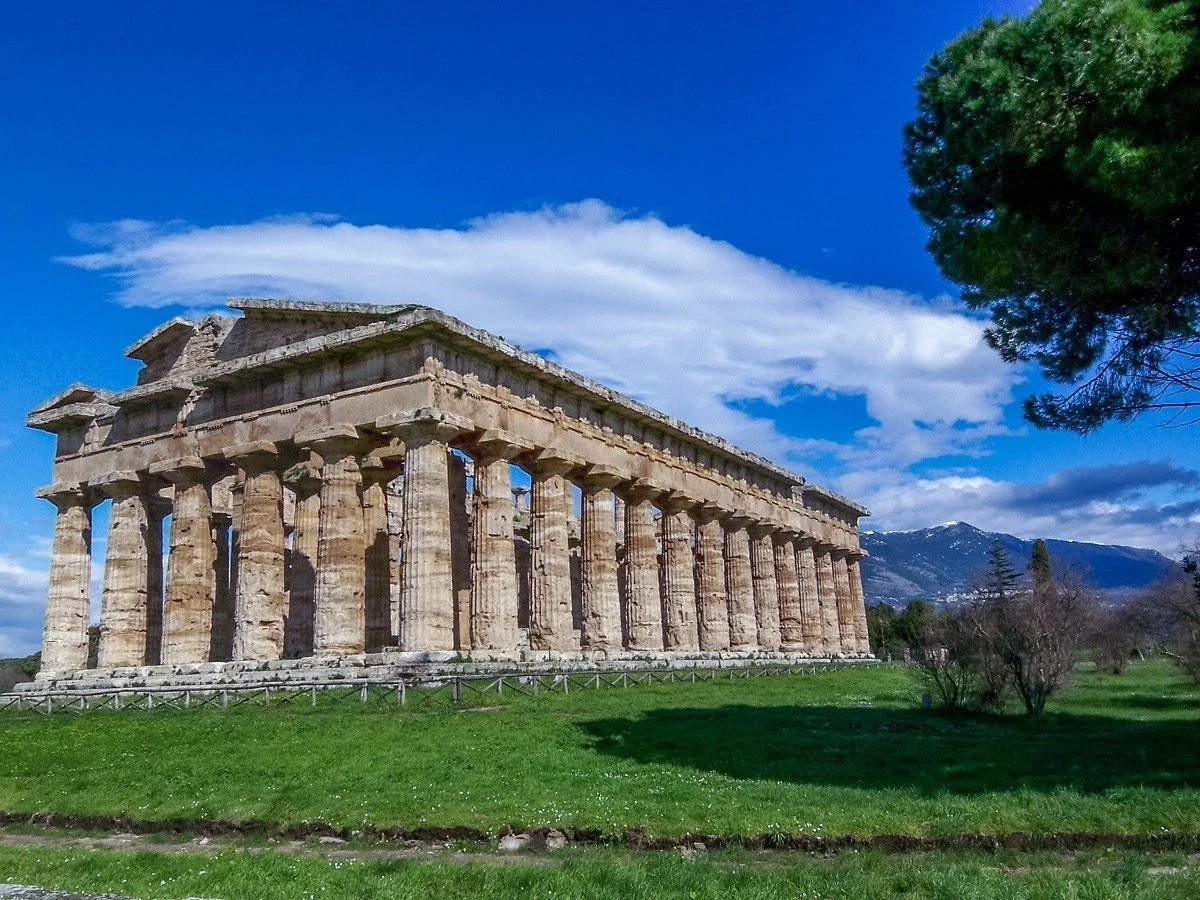
The Ruins of Paestum comprise three major Ancient Greek temples and other lesser ruins. The structures sit on a vast plain, close to the ocean and beneath towering mountains. The setting is ideal.
Some of the temples you should explore include the dual Temples of Hera which happen to be the most well-preserved structures at the site. The first Temple of Hera dates back to 550 BC while the second Temple of Hera was constructed in 440 BC. The third temple to explore at this historic landmark is the old Temple of Athena which dates back to 500 BC.
When we visited Paestum a number of years ago, we were surprised by how well preserved the site is and how few tourists come here. We wanted around for nearly two hours and only saw two other people.
The Amalfi Coast
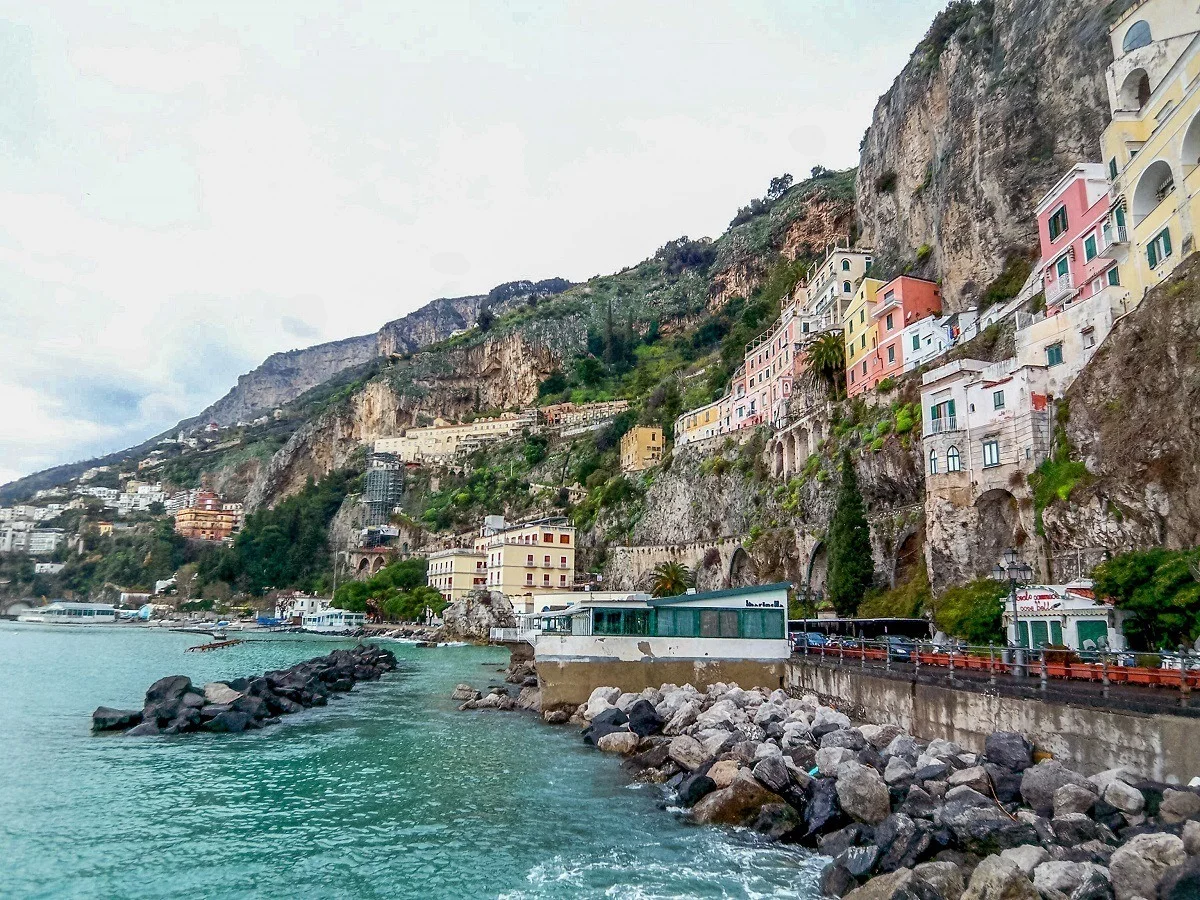
The city of Amalfi was once one of Italy’s pillars of maritime exploration. While it is no longer a top maritime location for Italy, it is still one of Italy’s major landmarks. This is because of its beautiful coast, which draws lots of tourists. The Amalfi Coast is a highly beautiful Mediterranean landscape surrounded by little villages along the shore beneath mountains and cliffs.
Some of the things you can do along the Amalfi Coast include taking a slow drive along the coast. Take your time and explore the beauty of the landscape and you make your way up to the mountaintop village of Ravello.
The Amalfi Coast is a place to enjoy the views, delicious food, and a slower pace.
Uffizi Gallery
The Uffizi Gallery in Florence is one of the most famous art museums in the world. It is also the most visited museum in Italy for a very good reason: it’s spectacular.
The Gallery has several renowned works of art on display including masterpieces by many Renaissance artists like Michelangelo, Leonardo da Vinci, and Botticelli. If you are an art enthusiast, a trip to Uffizi Gallery will be an exciting experience, allowing you to see the evolution of art in the Western World.
Cathedral of Santa Maria del Fiore
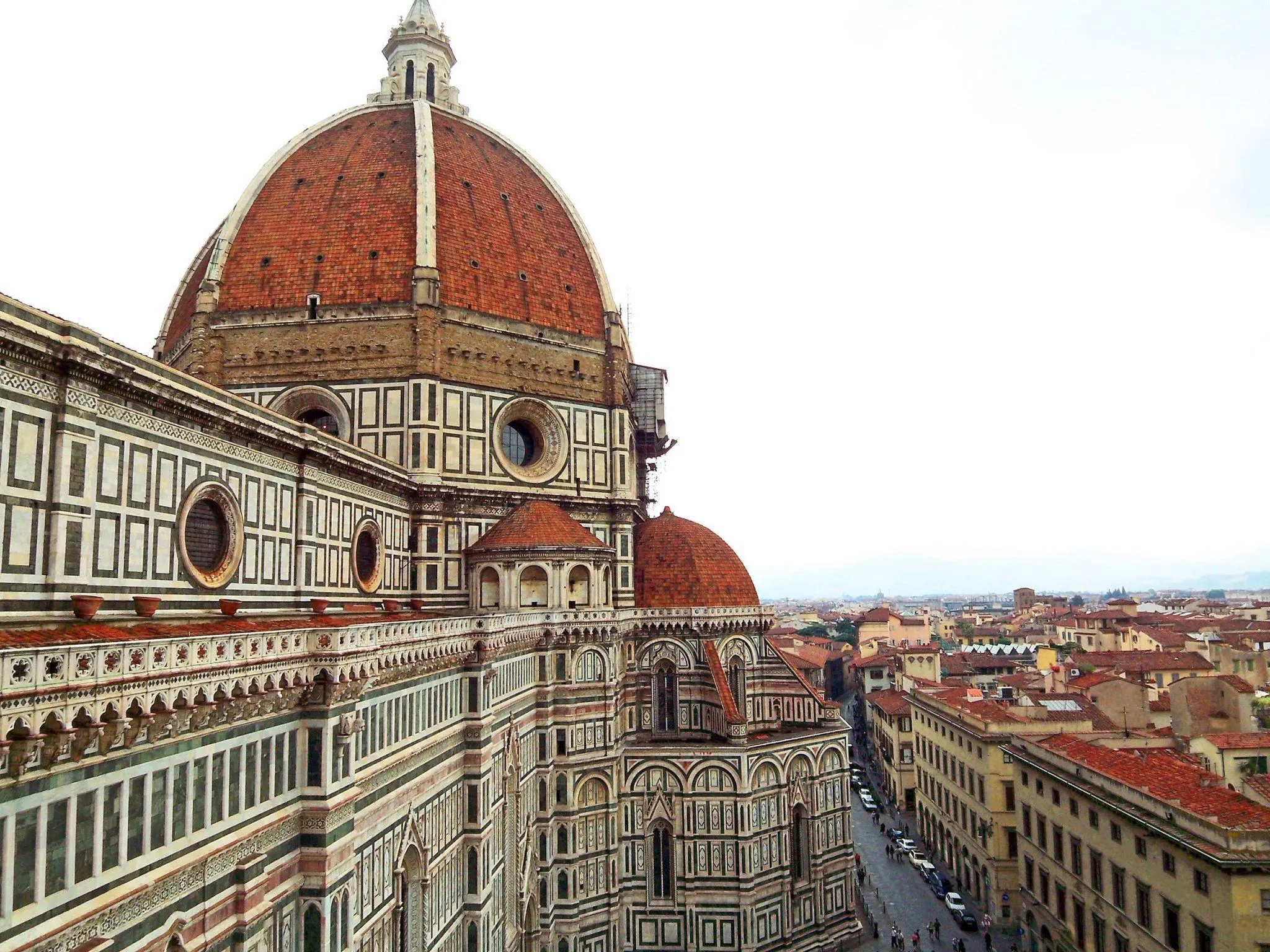
The Cathedral of Santa Maria del Fiore, also popularly known as the Florence Cathedral, is a symbol for the city. This Renaissance church was built to represent the economic, artistic and social importance of the city. It is also the third-largest cathedral in Italy.
Its unique exterior known is covered in beautiful artistry that makes it stand out. Be sure to take a guided tour.
We were absolutely enthralled by the beautiful of this magnificent cathedral and spent hours taking photos of the beautiful façade. You can never have enough time here.
Piazza Della Signoria
Commonly known as The Old Palace, Piazza Della Signoria, is a highly popular Italian landmark in the city of Florence. This public square was created in the 14th Century to be the city’s political hub, and it has remained that way to date. Piazza Della Signoria has been the location of many historical events in Florence.
The public square features various tourist attractions, including the Uffizi Gallery, replicas of Michelangelo and Donatello’s statues, as well as the Neptune fountain.
Basilica of Santa Croce
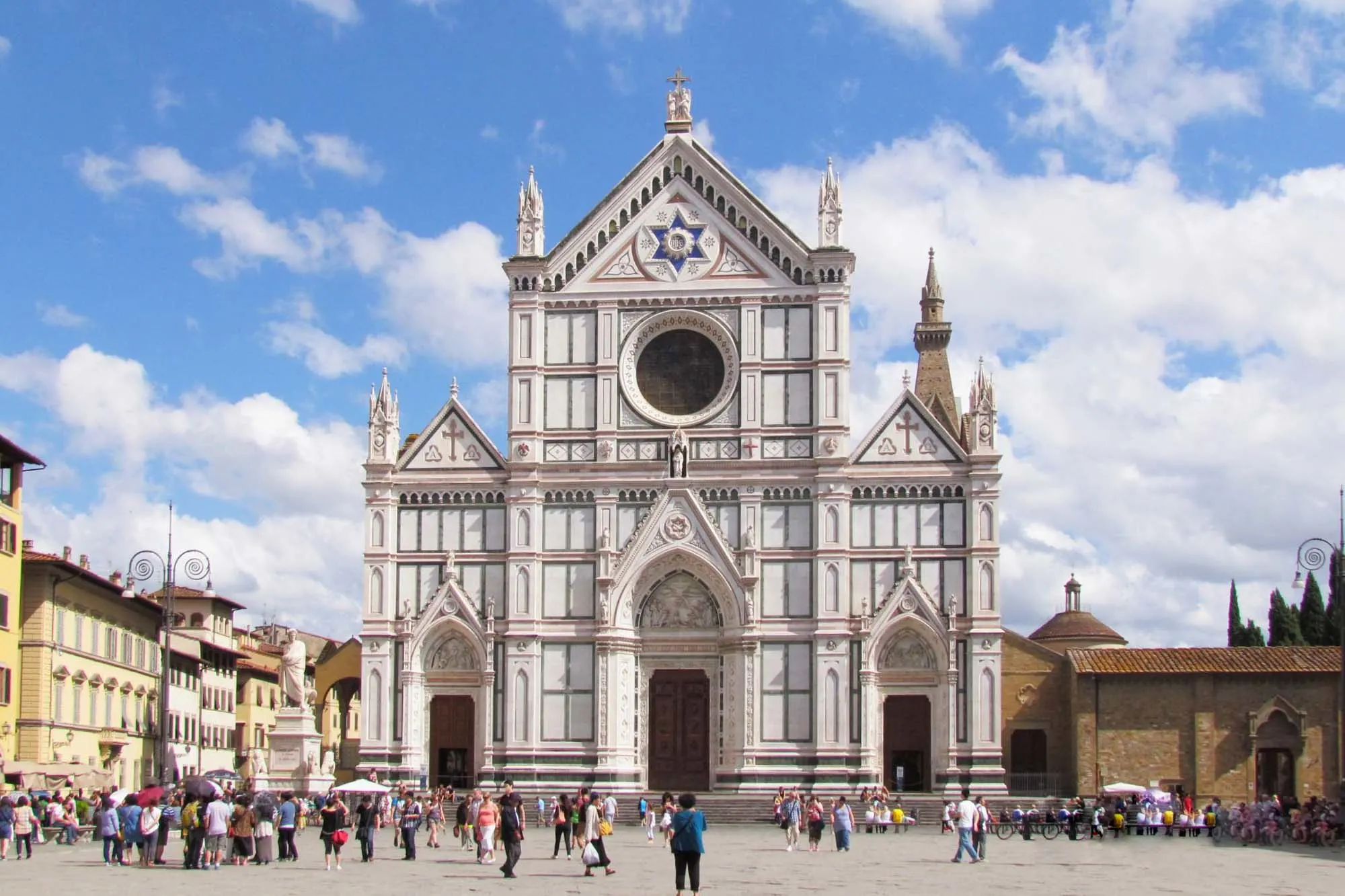
One of the most famous buildings in Italy, the Basilica of Santa Croce, is the second-largest church in Florence and the largest Franciscan church in the world.
There are several points of interest that can be found in the Basilica of Santa Croce. These attractions include frescos by Roman artists Giotto and Taddeo Gaddi, the Pazzi Chapel, and a museum containing artworks collected over decades. But most people find the tombs of famous Italians to be a highlight, including Dante, Michelangelo and Galileo.
Bargello National Museum
The Bargello National Museum, also known as the Museo Nazionale del Bargello, is devoted to medieval and Renaissance art. It is well-known for housing some of Donatello’s finest works. Some of the other artworks you will see there include works by Michelangelo and Giambologna. The museum houses numerous sculptures, intricate gold work, and enamels that date back to the Middle Ages.
Basilica of Santa Maria Novella
This landmark is famous because it is one of the most important churches in Florence. It also ranks high on the list of beautiful churches in Italy. The church is an architectural wonder that merges Renaissance and Gothic style architecture.
Some of the things that make the Basilica of Santa Maria Novella stand out include its white and green exterior at the front of the church, and its magnificent interior consisting of beautiful paintings such as a large painting of a crucifix by renowned Renaissance artist Giotto, the Holy Trinity painting by another renowned artist of the Italian renaissance era, Masaccio, and a carved crucifix by Brunelleschi.
Ponte Vecchio
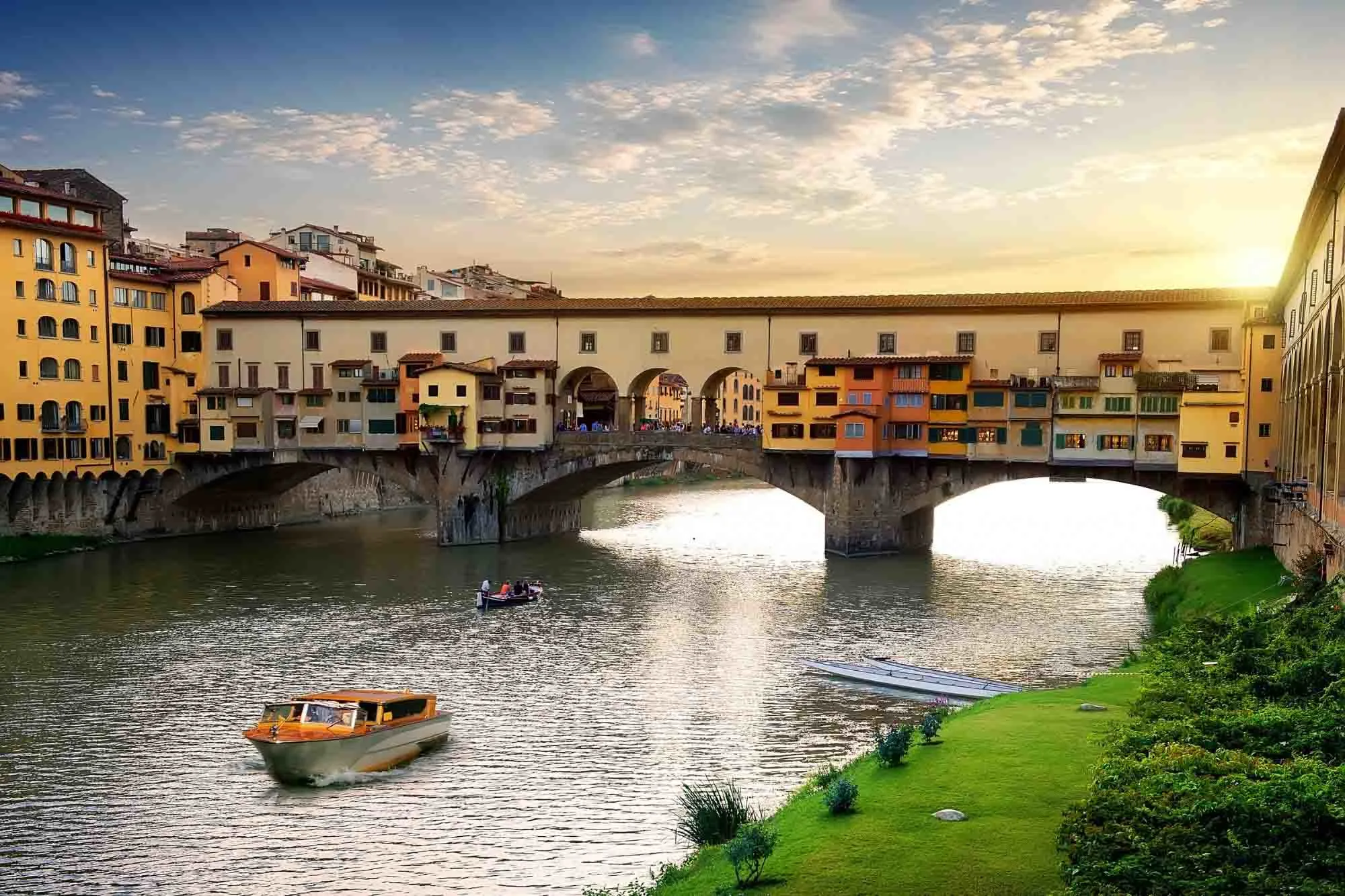
The Ponte Vecchio is one of the most iconic monuments in Italy. It is a magnificent bridge across the Arno River with a rich history, as it contains a covered passage, the Vasari Corridor, which was once used by the Medici family, who used to rule Florence. The Medici family used it to evade attackers when walking from one of their palaces on one side of the river, the Palazzo Vecchio, to their other palace on the other side of the river, the Palazzo Della Signoria.
Take the Vasari Corridor and visit both beautiful palaces, shop from the jewelers and art dealers with shops along the bridge. We found them be a quite expensive, but maybe you’ll find something that catches your eye.
Duomo di Milano
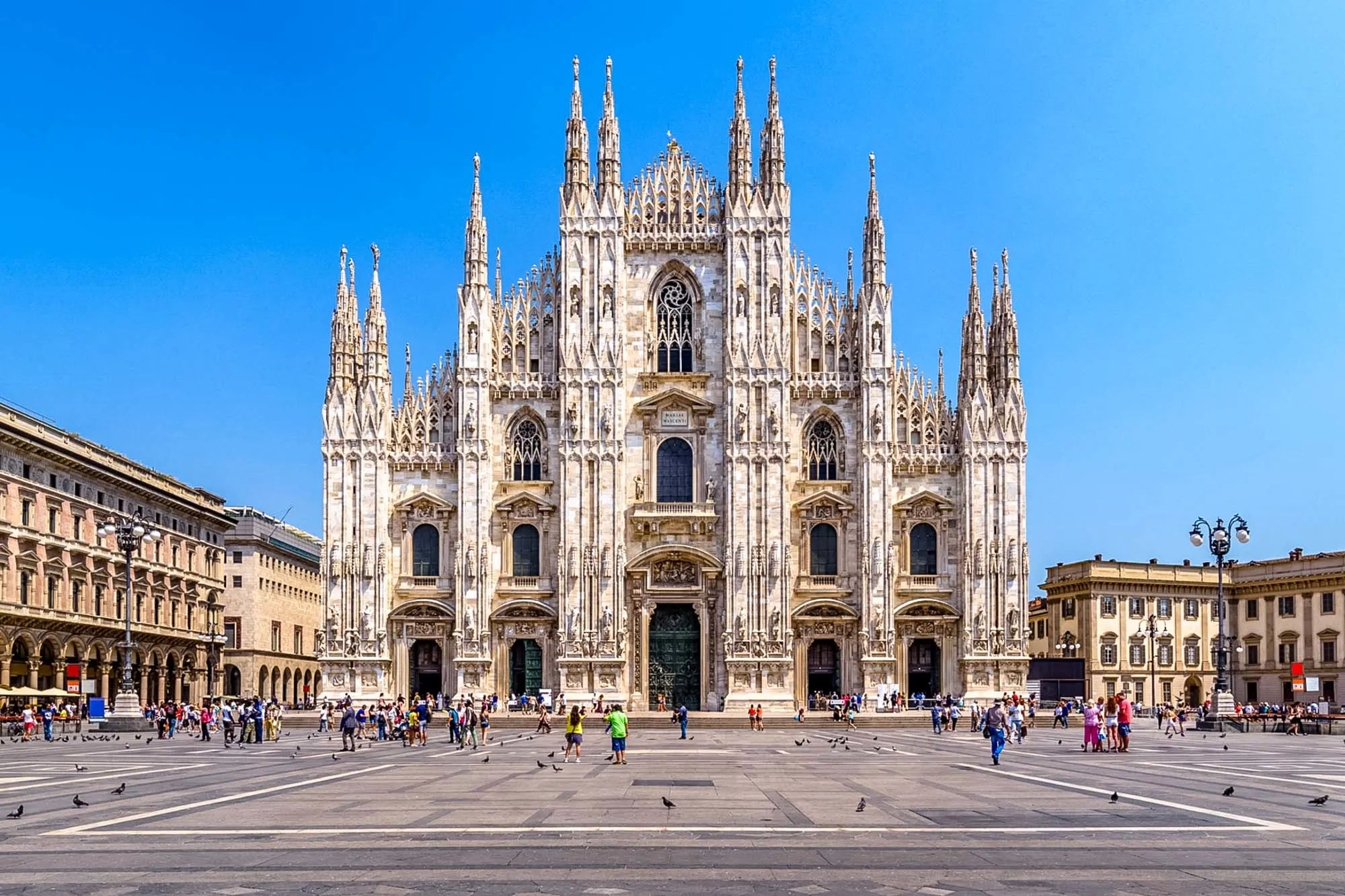
The Duomo di Milano or the Cathedral of Milan, is one of the first landmarks people visit when they are in Milan. This is often due to the size of the Cathedral, which is the fourth largest Cathedral in the world. The Cathedral took six centuries to be completed, with construction beginning in the 14th Century. It is the seat of the Archbishop of Milan.
Explore the six main sections of the Cathedral that are open to the public. These are the interior of the Cathedral with its astonishing artworks and religious relics, the rooftops of the Cathedral from which you can get amazing views of the city, the Duomo Museum housing important pieces of art, the archaeological area, the crypt of Saint Charles housing the remains of Saint Charles Borromeo, a former Archbishop of Milan, and the San Gottardo Church.
Sforzesco Castle
The Sforzesco Castle is one of the largest castles in Europe. The Duke of Milan, Francesco Sforza, built it in the 15th Century and it was later enlarged between the 16th and the 17th Century.
The castle is known for housing several museums, including the Ancient Art Museum featuring artworks from the medieval and Renaissance periods. There is also an Egyptian Museum featuring artworks from ancient Egypt. Finally, the castle houses the Musical Instruments Museum, where you can look at the castle’s impressive collection of musical instruments from the 15th Century to the 20th Century.
Teatro Antico di Taormina
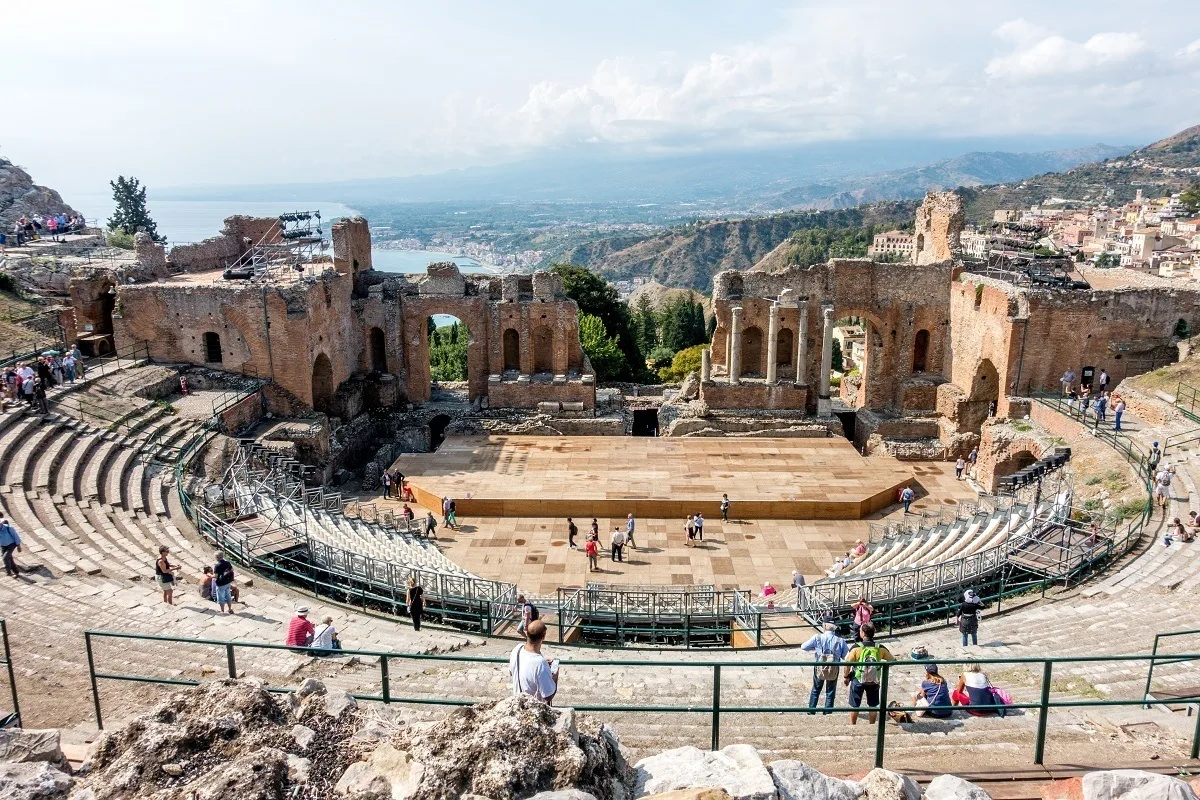
If you are looking for a tourist attraction that combines grand views of the sea and a historical experience, then look no further than Teatro Antico di Taormina, one of the most amazing sites in Sicily.
This historic landmark is an ancient amphitheater that was built in 265 BC for Greek dramatic performances. After the Roman Empire took over, it was expanded to make room for gladiator battles and games. It is the second-largest theatre in Sicily, but is definitely the most beautiful!
Mount Etna
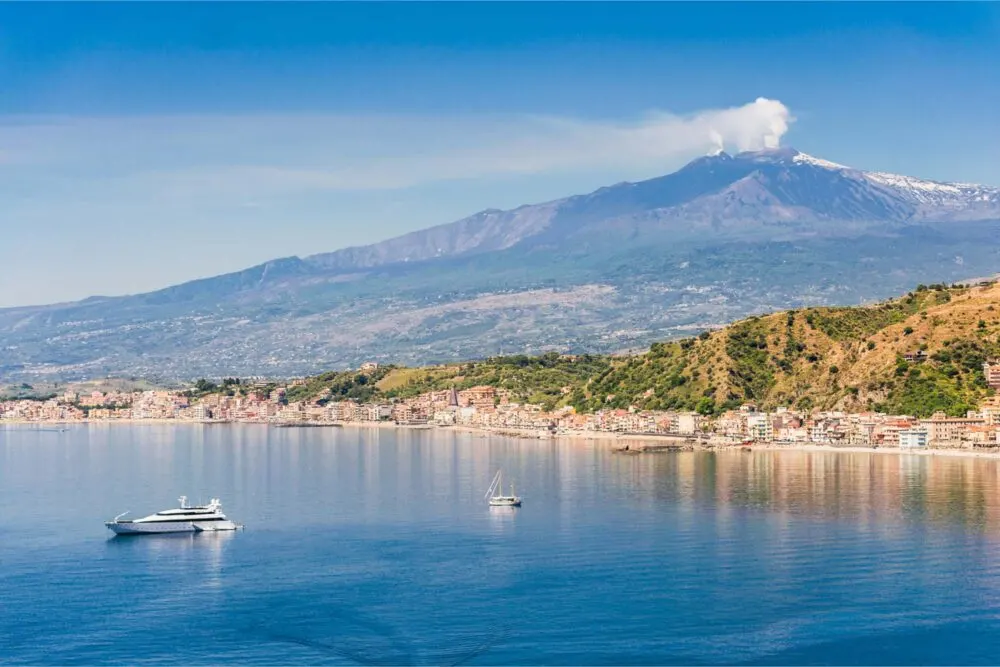
Located on the island of Sicily, Mount Etna is one of the most active volcanoes in the world and is listed as a UNESCO World Heritage Site. Over centuries volcano’s eruptions have created unique geographical features that have shaped the island.
At Mount Etna, you can take a guided tour to learn the history and geography of the volcano. There are also skiing and hiking opportunities at Mount Etna. If you are a wine enthusiast, ask where to get the excellent local wines produced on the slopes of the volcano.
Street Markets of Palermo
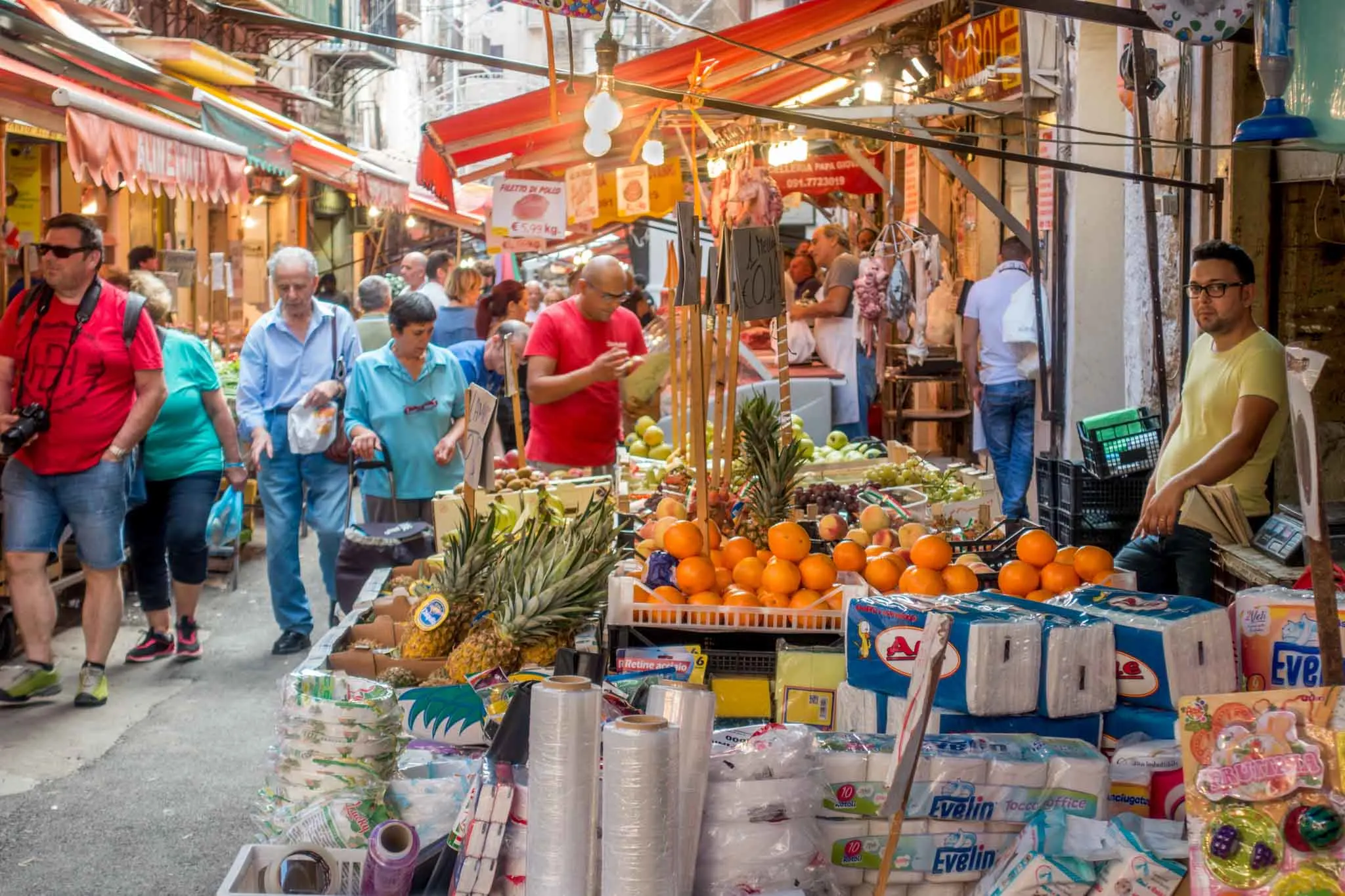
The ancient city of Palermo is popular for its outdoor Sicilian markets where you can find almost every type of item you need. Palermo still has four street markets which are Ballarò, Borgo Vecchio, Capo, and Vucciria.
These markets provide a doorway into the past, maintaining old trading traditions of Sicilians and standing as proof that the old can coexist with the new. Take out time to explore each market. Ballarò is the largest of all the street markets where you can find almost anything. Capo is a major center for purchasing agricultural products. Borgo Vecchio and Vucciria go from relatively bland day time markets to lively night scenes daily. The city of Palermo is a traveler’s dream, but don’t miss the markets!
Basilica of St. Francis of Assisi
St. Francis of Assisi is one of the most popular Catholic saints, and it is no surprise that one of Italy’s most prominent landmarks is a cathedral named after him in his hometown. He was born in 1181 and died in 1226 in this city. The Basilica of St Francis of Assisi holds the remains of this popular saint and is an extremely popular pilgrimage site for tourists.
Listed as a UNESCO World Heritage site, the Basilica consists of two churches and the crypt of St. Francis. It has so many beautiful frescos created by medieval painters such as Cimabue and Giotto.
Alberobello
The town of Alberobello is a picturesque landmark in Italy that has been listed as a UNESCO World Heritage site since 1996.
The town is remarkable for its many Trulli. Trulli are houses built without mortar. This innovative building style goes back to the 16th Century when the local rulers ordered the residents to devise ways to build homes without mortar so the houses could be easily dismantled and built back to avoid paying property taxes to the King.
Alberobello has over 2000 Trulli, which are best seen at night with less crowds and the quaint town’s streets lit with fairy lights. For a better experience, consider staying the night in Alberobello. A large number of Trulli have been converted from residential homes to vacation rentals.
Cinque Terre
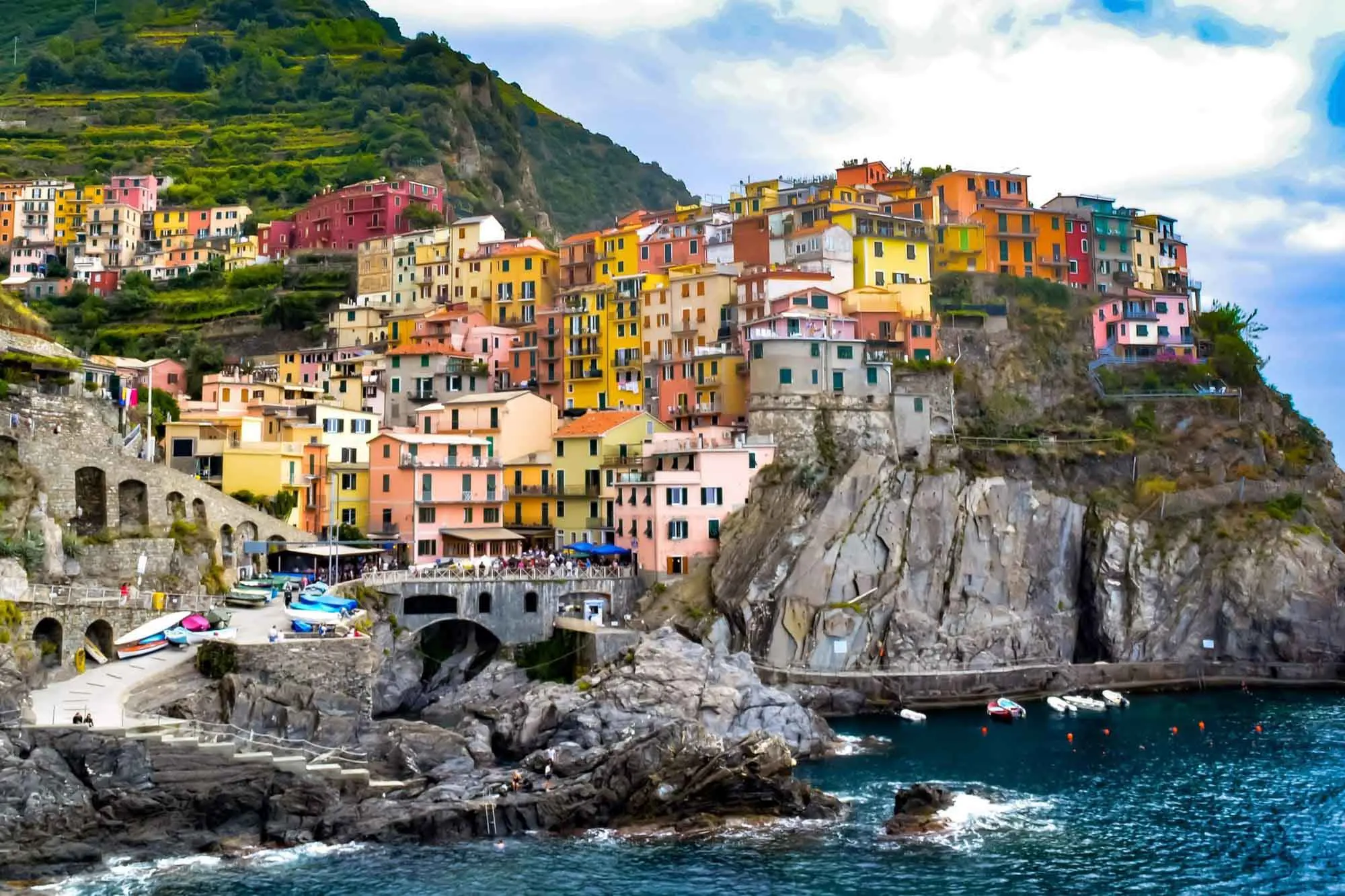
Cinque Terre is an area made up of five distinct, beautiful towns along the Italian Riviera. These towns are Corniglia, Manarola, Monterosso al Mare, Riomaggiore, and Vernazza.
The towns are connected by a train, but they are also connected by miles of trails. This area is very popular with hikers who will spend a few days going from town to town. Of course, there’s also swimming in the ocean and taking a boat tour along the coast to occupy your time.
Lake Como
This Y-shaped lake is the third largest lake in Italy. Apart from the scenic beauty of the lake, there are many attractions around Lake Como.
One of the many tourist attractions at Lake Como is one of the world’s most famous historic hotels, Villa d’Este, which sits majestically on the lake. It was made popular when it became the home of Princess Caroline of Brunswick. Other tourist attractions around the lake include the picturesque mountains and beautiful small villages. You can go on a hike through the mountains and end the day exploring Villa d’Este.
Verona Arena
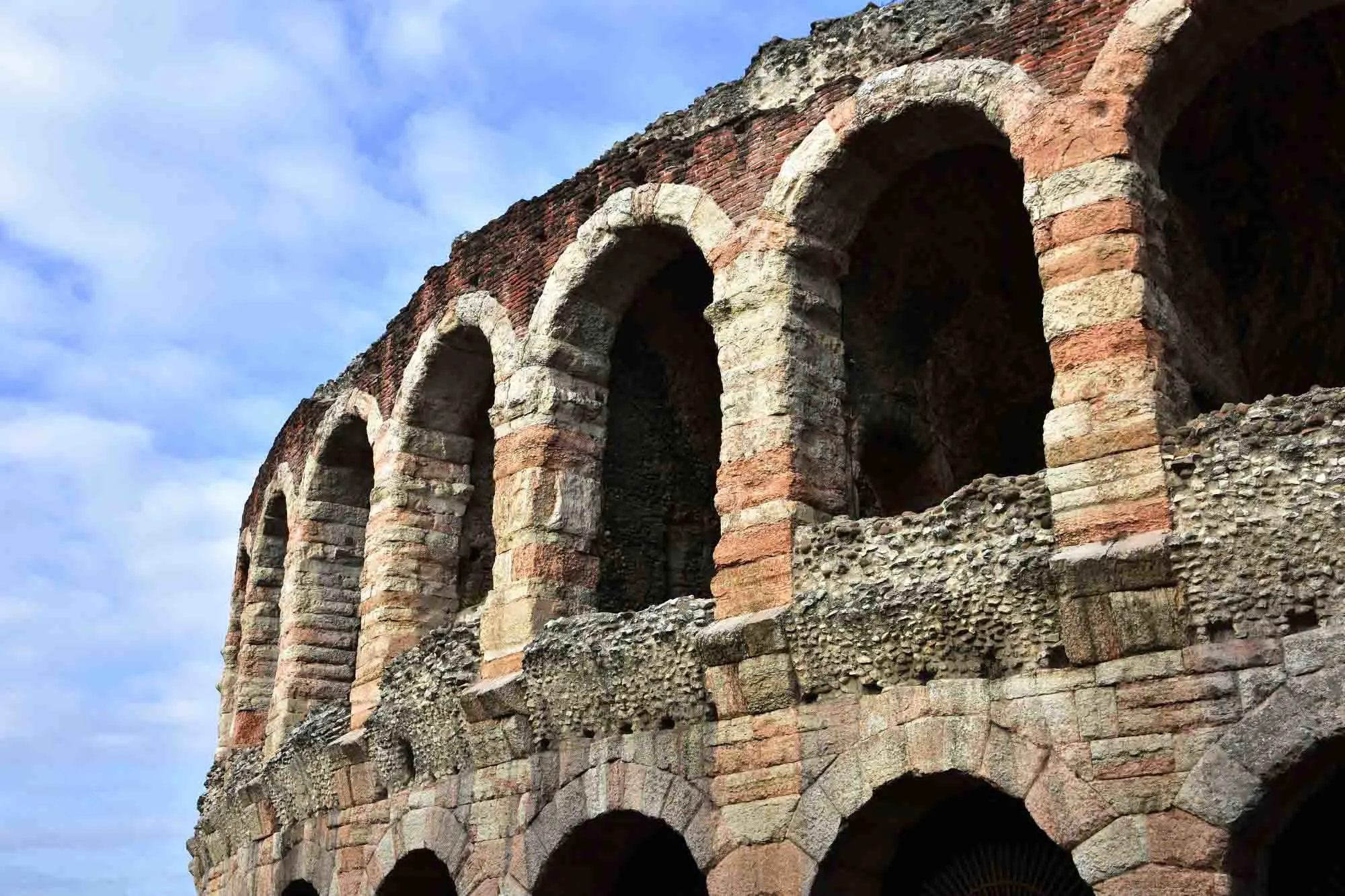
The Verona Arena is one of the oldest and best-preserved structures in Italy. Dating back to 30 AD, it is older than the more popular Colosseum of Rome. This amphitheater has been used to host diverse events in its long history, including animal games and gladiator fights.
Since 1913, it has been used as a concert venue for operas. Over the past century, it has become the venue for the Arena di Verona Festival which features several live performances from famous opera singers around the world. Beyond operatic performances, the venue has been used to host music concerts of highly popular music artists such as Adele, One Direction, Elton John, and Mumford & Sons, just to name a few.
Basilica of the Sacre Monte di Varallo
The Basilica of Sacre Monte di Varallo is a cluster of 45 chapels, each with its own unique purpose as well as art. The cluster was built by Franciscan monks who were trying to simulate Jerusalem and the way it was constructed. This has made the site a UNESCO World Heritage site and a location that attracts both curious tourists and pilgrims.
Explore the Basilica, which is the main building on the site, and hold a large number of unique artworks and relics. If you have the time, check out the other 44 chapels, which have about 800 life-size terracotta statues, as well as frescoes depicting the life of Christ.
Mole Antonelliana
Take a visit to Turin, the first capital of Italy and explore the Mole Antonelliana, a magnificent structure that is visible from any part of Turin. The structure shaped like a synagogue was initially intended to be a place of worship for Turin’s Jewish community. However, it is no longer being used as a place of worship.
Instead, it is now the National Museum of Cinema, where you can find a large collection of cinema relics and memorabilia.
Basilica of San Vitale in Ravenna
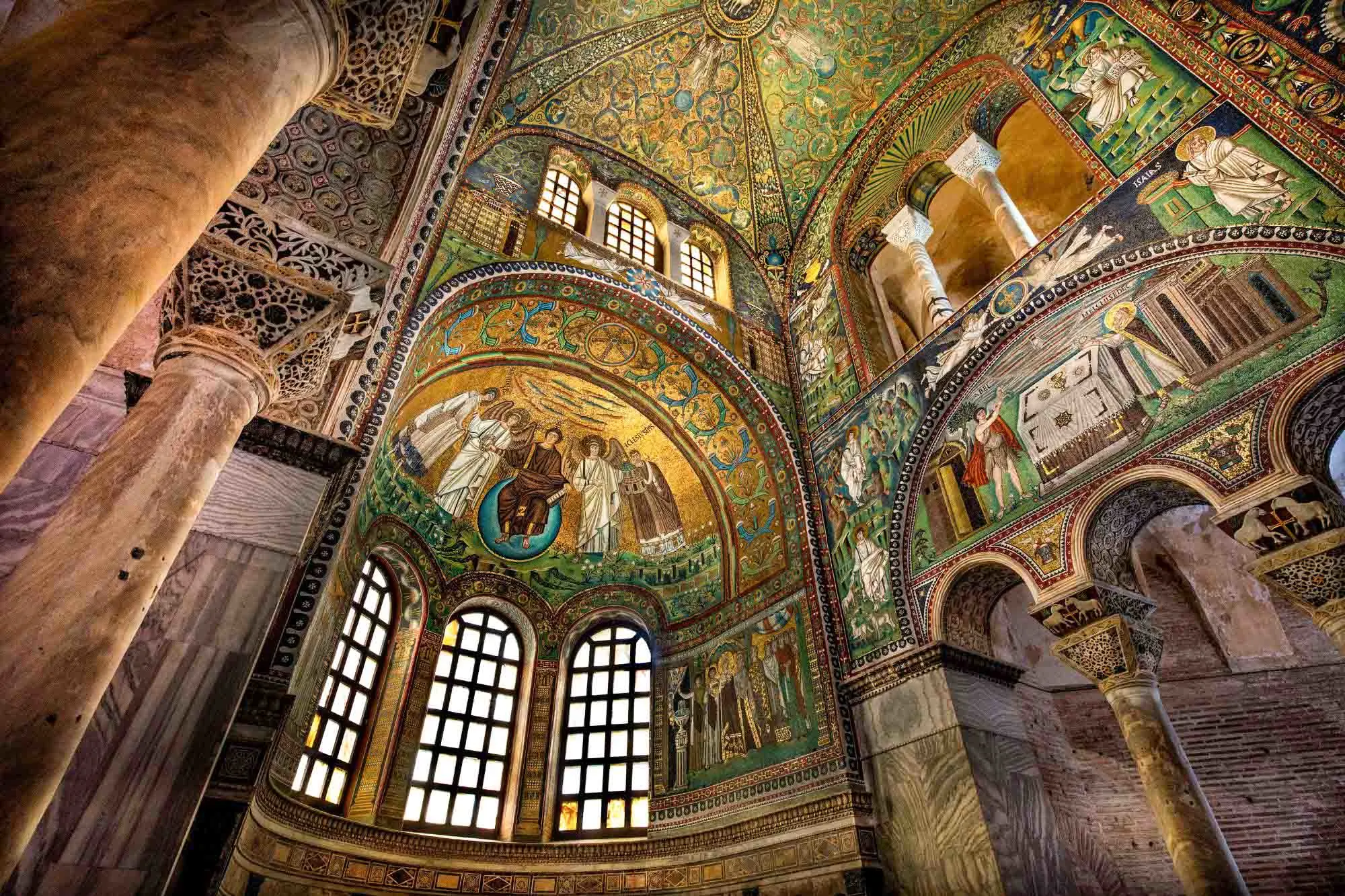
After the fall of Rome, Ravenna became the most important and most powerful city in the region. The Basilica of San Vitale is a remnant of that glorious era. It is one of the surviving proofs of early Christian architecture and art.
Though it is not shaped like the usual basilicas of Italy, it has been given this name because of its cultural and religious relevance.
Tour the grounds of the basilica. Take in the beautiful mosaics depicting major Old Testament stories such as Abraham and Melchizedek, the story of Moses and the burning bush, and the sacrifice of Isaac, to mention a few. There are also mosaics depicting other images and scenes of religious significance to Christians.
Exploring Italy promises to be an exhilarating experience if you know the right places to visit and the best tourist attractions to look out for. Put on your adventure boots and experience the amazing heritage of Italy.
Lance Longwell is a travel writer and photographer who has published Travel Addicts since 2008, making it one of the oldest travel blogs. He is a life-long traveler, having visited all 50 of the United States by the time he graduated high school. Lance has continued his adventures by visiting 70 countries on 5 continents – all in search of the world’s perfect sausage. He’s a passionate foodie and enjoys hot springs and cultural oddities. When he’s not traveling (or writing about travel), you’ll find him photographing his hometown of Philadelphia.
